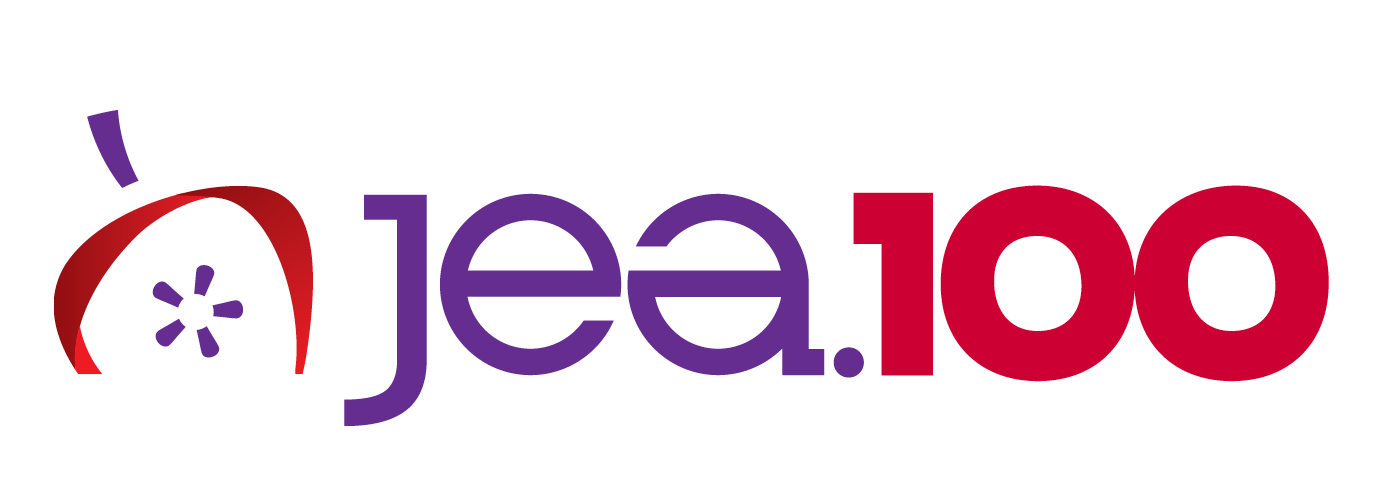Results for 2014 board of directors election
Of the 2,074 potential voters, 798 people actually voted and 11 abstained for a voter turnout of 39 percent. The board members take office May 1.
| President | Mark Newton, MJE (100%) |
| Vice President | Sarah Nichols, MJE (62%) |
| East Regional Director | Stan Zoller, MJE (38%) |
| West Regional Director | Carrie Faust, MJE (45%) |
| Professional Support Director | Megan Fromm, CJE (37%) |
| Scholastic Press Rights Director | John Bowen, MJE (100%) |
JEA conducted its election for six board positions Feb. 3-12. The slate of candidates to the board of directors was finalized at the general membership meeting Nov. 15 in Boston. The candidates’ biographies and position statements are below. The statements were in response to this memo sent to all candidates.
As outlined in JEA’s bylaws, voting members were teachers/advisers as defined in Article III, Section 1, current as of Jan. 15 of the election year. All JEA voting members received an official link to their online ballot at their email addresses on file. In addition, all voting members received a postcard with the link. All voting took place using the online system.
| President | |||
 |
|||
| Mark Newton, MJE | |||
| Vice President | |||
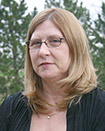 |
 |
 |
|
| Linda Drake, MJE | Sarah Nichols, MJE | C. Dow Tate | |
| East Regional Director | |||
 |
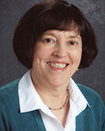 |
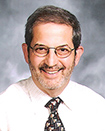 |
|
| Jane Blystone, MJE | Brenda Gorsuch, MJE | Stan Zoller, MJE | |
| West Regional Director | |||
 |
 |
 |
 |
| Carrie Faust, MJE | Jonathan Rogers, MJE | Tracy Anne Sena, CJE | Jessica Young, CJE |
| Professional Support Director | |||
 |
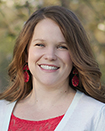 |
 |
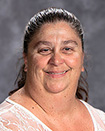 |
| Erin Coggins, MJE | Megan Fromm, CJE | Gary Lindsay, MJE | Anita Marie Wertz, MJE |
| Scholastic Press Rights Director | |||
 |
|||
| John Bowen, MJE | |||
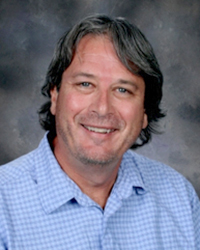
Mark Newton, MJE
Biography
Mark Newton, MJE, is the journalism teacher at Mountain Vista High School in Highlands Ranch, Colorado, a suburb of Denver, where he also teaches public speaking, serves as the school webmaster and is the adviser of VISTAj, a comprehensive program that includes the Aerie yearbook, Eagle Eye news magazine, VistaNow.org, Eagle Eye TV, a sports broadcast journalism team and Nest literary magazine.
He has been a teacher for 29 years and an adviser for 28 in Colorado and Arizona.
He is the current JEA president and the former Certification Commission chairperson, Southwest Region 2 director and JEA Colorado state director.
Newton was a founding member of the Scholastic Journalism Institute at the University of Nevada Reno, now being reinvigorated at the University of Nebraska-Lincoln. thinkSJI.org is dedicated to saving scholastic journalism.
Newton also was co-founder and co-leader of the National Journalism Professional Learning Community, a JEA initiative designed to enhance journalism teacher/adviser effectiveness and student learning.
He also served on the Steering Committee Advisory Council of the Student Press Law Center, the Ball State University School of Journalism Education Sequence Advisory Board and the advisory board of the Center for Scholastic Journalism at Kent State University. He also has served on the Colorado High School Press Association board of directors.
[slider title=”Read more from presidential candidate Mark Newton” group=”accordion-1″]
Newton is a member of small select group of advisers who have advised NSPA Pacemaker media at two or more high schools. In only his second year at Mountain Vista, the Eagle Eye earned a NSPA news magazine Pacemaker. The magazine recently was named a 2013 Pacemaker as well. Both the Eagle Eye and Aerie have earned top-ten Best of Show rankings from NSPA. Mountain Vista High School is the only school in Colorado to have both its news magazine and yearbook named All-Colorado for the three years the awards have been given.
While at Grand Junction High School, his alma mater, for 19 years, The Orange & Black newspaper/news magazine, a member of the NSPA Hall of Fame, was consistently named the best large-school newspaper in Colorado by CHSPA. The Orange & Black, of which Newton was the sports editor his senior year, also earned recognition from NSPA (news magazine and online Pacemaker and Best of Show top ten rankings) and CSPA (Gold Crown).
While all those publication awards are nice, Newton says he is most proud of all the individual accomplishments of his students, including four Colorado High School Student Journalists of the Year. Newton, an NSPA Pioneer, as well as a JEA Medal of Merit recipient, has been honored with the Marilyn Weaver Excellence in Journalism Teaching Award from Ball State University and as the Colorado journalism teacher/adviser of the year. Newton has served on curriculum committees and district- and school-level educational leadershipl committees. He also is a speaker at local, state, and national conventions, and summer workshops. Newton has served as an educational consultant to Jostens and appeared in the company’s “Yearbook: The ultimate outcome-based educational experience” video.
He is married to Pam, a first grade teacher, and has two children: Chris, a fifth/sixth grade literacy teacher in Houston, and Jamie, a counselor for the Colorado AIDS project. When together, they fight for who gets to read the newspaper first — and who gets to control the TV remote.
Newton holds an M.A. (physical education administration, sports information emphasis) and a double B.A. (journalism education and physical education) from the University of Northern Colorado.
What do you believe is the biggest issue facing scholastic journalism, and what would you do as a board member to address it?
The biggest issue facing scholastic journalism is its health within our schools. Let’s face it, some of our programs in some of our schools are exceptional. And, JEA’s programs are supportive of programs at that level. Our biggest challenge is in the next tier — making the good great and the not-so-good better. It’s a fascinating question and one that the current JEA leadership team address all the time. In fact, enhancing scholastic journalism has been the driving force behind the successful establishment of the Advisers Institute, the JEA Curriculum Initiative and our Educational Initiatives team.
All three of these signature programs were proposed by my team and I and overwhelmingly supported by the JEA Board of Directors and general membership to enhance JEA as the leader in aiding outstanding journalism educators. The level of engagement of attendees at the summer Advisers Institute in Las Vegas is extraordinary. We saw a need to recreate an existing JEA program into a new and improved program that directly enhances scholastic journalism instruction. Additionally, through our Curriculum Initiative and Educational Initiatives we are creating professionals capable of delivering 21st Century Skills plus the national Common Core initiative and understanding the role of Career and Technical Education in scholastic journalism.
The Curriculum Initiative, envisioned and created by myself and JEA executive director Kelly Furnas, is a great example of how JEA is positioning itself to be a leader in addressing the importance of scholastic journalism in the ever-changing and ever-challenging educational landscape. While existent in bits and pieces, JEA curriculum was in disarray. Now, it is soon to be a signature JEA program. While it is easy to criticize the Common Core (it’s politics, right?), it should be noted that the focus of our curriculum project is the Common Core concept of delivering relevant instructional outcomes. Our curriculum is driven by 21st century outcomes, not the Common Core per se. Regardless if your state is embracing the Common Core at face value, the Common Core idea of rigorous instructional outcomes for teachers to address transcends all states, school districts, schools and programs/courses. It is, simply, best practice for successful teaching and learning.
My leadership team, particularly Vice President Sarah Nichols, and I have worked for three years to not only address the biggest issues facing scholastic journalism, but to enhance JEA. I am proud to say that — as our intentions, actions and outcomes have demonstrated — we have been working tirelessly to create an association that supports advisers from the beginning of their careers to the end — from their first day in the classroom to mentoring those in their first day of the classroom.
My first day as president, I had two goals: (1) be the best leader possible: work harder than anyone, be kind, listen, set high, yet realistic, expectations and challenge then empower talents and ambitions; and (2) make JEA the go-to, first and best journalism organization (not just scholastic journalism, not just education) in the world.
Our six-year plan (we’re only halfway there!) was to lead not only our students, and our scholastic journalism colleagues, but education. From the get-go we knew JEA was amazing, and the scholastic journalism educational model was amazing — the skills being established in our journalism courses were transforming not only the lives of our students, and our knowledge and application of 21st century teaching and learning was not only challenging and engaging our colleagues in JEA and in our buildings, but education as a whole, too.
The one downside we saw in the old JEA was that it was reactive and we believed, in fact we ran for our current JEA leadership positions on this very premise, that JEA needed to be more proactive — and we would do, not just say, so. We believed then and believe now that JEA must be ahead of the curve, proudly screaming that journalism is the very best way to deliver the skills being demanded of our schools. My JEA brother and past president Jack Kennedy so eloquently states, “Journalism is 21st century English.” Sarah and I embrace that visionary statement and push it forward with, “Scholastic journalism is 21st century education.” That belief not only addresses the question of what is the biggest issue facing scholastic journalism, it has been our guiding principle in our actions over our first term, if not before.
With all that in mind, we have worked for the last three years to better JEA and put it in the best position to move forward. Sarah and I led challenging but much-needed (despite what the naysayers believed) efforts to solidify our headquarters location. The RFP process secured more contractually allocated time for our executive director (the brilliant and dedicated Kelly Furnas), reaffirmed our commitments to our headquarters staff (the skillful and dedicated Connie Fulkerson, Pam Boller and Meredith Fey) and challenged Kansas State University and the A.Q. Miller School of Journalism and Mass Communications to become a full-fledged partner and deliver valid and compelling programming, which they have indicated they will do. Additionally, the RFP engaged others (professional and educational) with similar missions and goals to see JEA has a viable and significant partner in promoting journalism and journalism education. The RFP process has led us to establish or re-establish partnerships with like-minded professional, collegiate and educational organizations. If re-elected I can — and will — continue that outreach. I am proud to say I have built and maintain the many relationships needed to address the overall health of scholastic journalism and position JEA as a lead player.
In our three years, not only have we improved our headquarters and the Advisers Institute, but our leadership and hard work in restructuring the board to provide laser-like focus on our most significant priorities (press rights and education) has positioned us to better address all our needs in scholastic journalism. The restructuring better aligns all our programs and allows us to react quickly and efficiently to new ones. It also empowers a higher level of multi-level engagement in the budgeting process. The budgeting process will be all the better because of level of engagement of our board, our members and our staff.
Our past efforts speak for themselves. In fact, I am quite content to stop there. However, I believe I owe it to you to lay out our plan for the future.
All along, we have worked for you and now ask for your vote to allow that work to continue. Because of our successful efforts described above, when re-elected we pledge to work on aligning, creating and improving programming to make us better journalism educators, all of whom will be well-positioned to create programs and lessons that create better students and citizens. To us that means aligning programs, strengthening community — we got your back, brothers and sisters! — and building and sustaining positive partnerships and successful relationships. Everything from here on out will strengthen JEA and empower the newly elected board and our general members and partners. In short, we pledge to make decisions that promote the best we have to offer. We pledge to build new programs that either strengthen existing programs or fill in gaps, both of which will make us better.
I know my team and together we promise to work smarter — because, and I am proud to say it, we already work hard. In our lives, I know JEA is a priority, often at the expense of other things, and I know that will not change if we are re-elected as a team. In fact, we believe if we are given the opportunity to continue to lead JEA, we are the team best positioned to move JEA forward. We have already in place solid relationships — personally, across JEA and with our partners — that are based on an undeniable work ethic, similar visions and mutual respect.
The efforts already in motion — from curriculum to an improved budgeting process, from an engaged headquarters host to the combined mentoring/outreach plan, from a focused and energized board to our community-building efforts — are moving your organization to better, more easily sustainable positions. We have accomplished significant, positive changes, driven from individual and collective ideas and efforts. We have not only crafted programs to make JEA better, we have without fear or favor jettisoned ones that failed, challenged others to change and adapted and worked hard and collaboratively to empower existing programs to get better and see their relationship within the bigger organization. And, we have done all of that with fairness, compassion and always with the greater JEA in mind.
In my opinion, our efforts are not only working, they are working exceptionally. So well, in fact, I believe we should be afforded the opportunity to push forward. You already have the team in place that not only has the vision, but the proven track record of working hard — and is pledging here to work even smarter — for you and for our association. During the next three years we will move this organization from great to exceptional.
Our management style is to lead by example — work hard and deliver! — and question and challenge all involved to get better. We are not afraid to ask tough questions, nor make tough decisions. We pledge to work with everyone and help all see how “their” program and effort not only fit within JEA but make JEA better because they embrace and enhance all other JEA programs. That’s leadership. That’s the team you have in place, and that’s the team you can vote to keep in place.
As a board member, what would you do to address the needs of multiculturalism among scholastic journalism educators?
During the time I have served on the JEA board, particularly as president, my actions have always been inclusive. Bringing all kinds of members into the best scholastic journalism education group might be the easiest task we have. Empowering them to be successful — from the classroom to professional outreach to local and national service — might be the most challenging.
I believe I have communicated to our leadership, to our members and to their students that JEA is an association in every sense of the word, a collegial community with a shared mission that fosters “an atmosphere which encompasses diversity yet builds unity.”
If re-elected as president, I will continue to embody inclusion, support mentoring and outreach and encourage our staff and leaders to “see” everyone. During my tenure as president, we had several opportunities to engage our members. And, I am proud to say, we have been successful in doing so.
The budget process and the headquarters search empowered a new JEA. After the Finance Committee took the board’s initial requests and proposed an annual operating budget, we engaged not only our voting and non-voting board members, but our members as well. Under my leadership, we held open conference calls to explain the process, the rationale and the choices. I listened. We listened. And, in the end, the board, faced with difficult choices, made solid and fair decisions. What comes out of a painful process like that is better educated and engaged board and general members. That is always a good thing.
The same goes for the headquarters search. Because of that, the level of engagement, of community, has skyrocketed. Our partners — and potential partners — not only know more about JEA, they recognize the value in working with us. They want to work with us because we are healthy, viable and visionary.
As in the past, I promise to apply the same values and work ethic required to accomplish — not just propose or think out loud and then drop the ball — the same for our ambitions of reaching all members and supporting their efforts for whatever challenges they may face.
As a board member, what would you do to address the needs of scholastic press rights?
First and foremost, I will be the strongest and most sincere advocate for student freedom of expression in my own classroom and with my students’ media. I promise to educate each and every student to responsibly exercise their freedoms.
As an adviser in Colorado, a Tinker state, I will be present and supportive of my colleagues. I will proudly hold up my program and my state as models of student press rights.
As a board member, I will continue my unwavering support of our Student Press Rights Committee. Long ago, I recognized that strong leaders, who are committed, organized and empowered, will make substantive progress. Our team there is exceptional. I see my role as president to support SPRC — and all our committees and initiatives, for that matter — with every personal, professional and organizational resource available.
I relish the opportunities to challenge assumptions and find creative ways to help every part and every person in JEA achieve success. The thing about press rights is that we can always do better. There will always be an administrator who censors student speech. There will always be one more adviser whose job is in jeopardy.
My belief is that we must address scholastic press rights from two avenues. The first, and most important, is from an educational standpoint. We are educators and, as such, we not only educate our students, but, at times, we also must educate our colleagues, administrators, parents, legislators and communities. If we can educate our students, we empower them to blend their legal rights with genuine ethical responsibilities. If we educate adults, we gain allies and advocates who not only see the value of scholastic journalism, but demand it.
Secondly, we must be leaders in advocating for student freedom of expressions laws at local, state and, I believe, the national level. Anyone who decides to establish the best practice of the Tinker standard should know that JEA has his/her back.
As a board member, what would you do to promote the needs of journalism educators in middle schools and junior high schools?
As a teacher/adviser and your president, I do not see any distinction between middle school/junior high school journalism and high school journalism. We are all educators and our kids all are student-journalists.
If re-elected president, I will continue my philosophy of inclusion, requiring all our programs and initiatives to embrace all members (and potential members) regardless of their status or the name on their school. The JEA leadership team will continue to see everyone as equals because not only is the right thing to do but because I will always model it.
I believe we are not college or high school or junior high or middle school educators, but educators. I believe we are not yearbook or newspaper or news magazine or web or broadcast or literary magazine advisers, but media advisers. I believe we are not emerging or experienced advisers, but colleagues. For sure, I am hopeful to be your president, but, first and foremost — and always, regardless of the outcome of the election — I pledge to always be your colleague.[/slider]
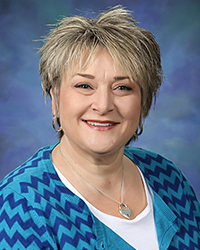
Lori Oglesbee-Petter, MJE
Presidential candidate Lori Oglesbee-Petter announced on Jan. 29 that she wished to withdraw from the race. She provided this statement: “I am no longer a candidate for JEA president. Yesterday afternoon I called Mark Newton and Kelly Furnas to remove my name from the election. JEA is more important than an election that creates a divisive and bitter atmosphere. Thank you for all your support, and I ask that you now support the organization that brought us all together.”
Her name does not appear on the online ballot available to voting members.
Biography
I knew I wanted to teach high school, so when I interviewed for one of my first teaching positions, I was willing to take on what the principal outlined as my job.
English 7, 8, 9, 11 and 12. Newspaper. Overseeing the class taking German I via satellite. Supervising the gifted and talented classes.
“I can do that,” I said, as he listed my duties.
He knew I wanted the job. And I got the job.
Today, I’m a little less gullible and am teaching at a much larger school advising a much larger program that has grown to three full-time journalism teachers from my original six classes my first year at McKinney High School in Texas. On campus, I’m the person who gets things done because no matter the challenge, that little voice inside says, “I can do that.”
And much of the success in being able to make accomplishments is about to work with others, including my students, colleagues and administrators.
I’ve advised staffs who win Pacemakers, Crowns, Best of Show, Texas Star and been inducted into the state and NSPA Hall of Fame.
Working with administrators, we’ve outfitted our media program with technology that would rival any college – with my students thriving in that environment.
[slider title=”Read more from presidential candidate Lori Oglesbee-Petter” group=”accordion-2″]
I was selected to write the Texas state yearbook curriculum for the Texas Association of Journalism Educators and now have developed the Writing Basics unit for the new JEA curriculum initiative.
I’ve advised yearbooks, newspaper and broadcast all at the same time and have started and co-advised a news website without a class for it.
When I moved into my new classroom this year and unpacked the awards I’ve won as an adviser and mentor, each one reminded me of what accomplishments advisers with hardworking staffs and advisers who work to contribute to scholastic journalism outside of their classrooms can do – 2009 JEA Yearbook Adviser of the Year, 2010 Ithaca College S’Park Media Mentor Award, 2005 Texas Journalism Teacher of the Year. When I set a goal, I make the plans to achieve it.
I have used my goal-setting approach to help my students, scholastic journalism organizations and myself achieve.
As a leader, I was elected to the JEA board for 11 straight years, first as Curriculum and Development Chair, and then Secretary to the Executive Board.
I’m ready to lead JEA through the challenges educators face with limited budgets and standardized testing and further assist teachers as they pursue excellence in their own classrooms.
What do you believe is the biggest issue facing scholastic journalism, and what would you do as a board member to address it?
Technology funding and training can undermine every other facet of a journalism program. We can never separate realistic journalism from the demanding needs of technology. We have no better proof, than the success we have seen with JEA’s Digital Media program. The hands-on approach to funding acquisition, policy development and technology advice and training should be a model for further technology instruction.
Software and hardware are the focus of instruction but the means to achieve the desired product with professional results. However, we cannot produce without the technology.
We should explore certification programs like Adobe and Apple for teachers to offer in their classrooms. Membership would have even more value to those whose classes fall under Career and Technology Education and Perkins funding.
At the workshops I teach in the summers and at conventions, the classes on technology instruction fill first. Teachers need support in learning the software and how to allow students to move ahead without us. A planned, outlined strand of classes during our workshop could address this need.
Budgeting constraints plague successful and fledgling programs. We can become the clearinghouse for funding opportunities and how-to guides to approach administration for needed equipment.
Through a collaborative effort of all three high schools in my district, the journalism programs are now in five-year rotation for equipment replacement including computers, servers, cameras, lenses, iPads, laptops, etc. When we showed the administration the volume of work produced in these classrooms with the focus on digital storytelling, they immediately saw the value.
Helping other schools find the right rationale and funding sources would be invaluable to our membership.
No matter the state or federal mandated curriculum flavor of the month, journalism will always be dependent on technology.
As a board member, what would you do to address the needs of multiculturalism among scholastic journalism educators?
Since the multicultural commission elected position was eliminated from the JEA Board in the recent restructuring, the remaining members of the board must make inclusion a priority.
The five schools where I’ve taught give me insight into this area. My career has included a rural school so small that we didn’t even have a cafeteria. I’ve taught in a school that changed to minority majority. My current school is in a middle class suburb of major metropolitan area. I started in middle school and am now in a high school. My diverse experience will prove valuable in addressing the needs of multiculturalism.
The majority of students who attend the JEA/NSPA conventions are white females. It’s easy to make assumptions as to why our demographic is not more diverse.
On my own staff, I seek out a representative membership reflective of our school makeup. I especially focused on increasing male membership. For the first time, my 38-member staff has slightly more guys than girls. I made a conscious effort to determine what would make my staff more diverse and it worked.
Think of it another way. Consider this.
To increase yearbook sales on my campus, I collected data to determine who bought yearbook and who didn’t. What I found was not a socio-economic indicator or a race indicator. The student most likely to buy a yearbook is the student whose parents bought a yearbook. If that parent did not attend school in the United States, odds are that the family doesn’t have a yearbook in the house – no matter what the economic status, the race or the religion. For years I’ve been lectured on why minorities did not buy yearbooks. Repeatedly I was told that if they were not included in the book, they would not purchase it. However, my students created fair and balanced coverage that reflected the diversity of our campus. Still our sales did not increase.
Next, we sought out the group who did not buy books and interviewed them. The only commonality was the yearbook from the parents’ high school days. We spent our resources on showing students the value in the yearbook, not just the cop out of “too expensive.” After we collected the data and conducted interviews, the marketing team created selling strategies based on authentic data. Then our sales increased.
Similarly, that is what scholastic journalism organizations must do. We aren’t selling yearbooks but we are making unintentional assumptions about membership. We need an extensive study with data that can be used to develop strategies for being more diverse and create a culture of inclusion not only in JEA but also through a partnership in the study with other scholastic media groups.
As a board member, what would you do to address the needs of scholastic press rights?
As president, I would work with the elected scholastic press rights board member to address any needs our membership may have. I would be open to any initiatives presented.
Throughout my career I have been an ardent supporter of scholastic rights. When Frank LeMonte at the Student Press Law Center asked me to find fund-raising opportunities to celebrate the 50th anniversary of Tinker vs. Des Moines, I knew I could do it. After I contacted four yearbook companies, each committed to match student-giving up to $2,500 at the Saturday afternoon keynote during the convention featuring Mary Beth Tinker. Next, I made the membership aware of the opportunity and encouraged advisers to make sure our giving exceeded the typical $1,500 we collect. It worked. That afternoon, the collection buckets had more than $2,500. With the matching funds, that netted SPLC more than $12,500.
This is the same type of can-do attitude I will have to support all board initiatives including scholastic press rights.
As a board member, what would you do to promote the needs of journalism educators in middle schools and junior high schools?
Again, since the elected middle/junior high commission chair position has been eliminated from the board, we must convey to that segment of our membership that we will continue to support and work for them.
I have not personally polled or contacted a large enough base of middle/junior high advisers so I do not believe I can speak authoritatively on issue without making unfounded assumptions.
Therefore, I would appoint a committee of representative middle/junior high school advisers to research the needs and make recommendations to the board.
This is how we should proceed in all business. We need more input from our membership to monitor the meeting of their needs. Since our board is so much smaller now, we must make involving a broader section of the membership a priority.[/slider]
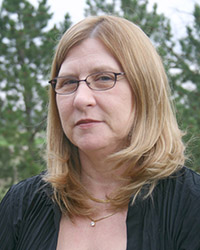
Linda Drake, MJE
Biography
Linda Drake, MJE, has advised the yearbook for 33 years and the newspaper for 22 years at Chase County Jr.-Sr. High School in Cottonwood Falls, Kan. Drake received the Engel Award in 1999 and has been named a distinguished adviser by the Dow Jones Newspaper Fund (2004). She received the JEA Teacher Inspiration Award in 2007 and was named the JEA National Yearbook Adviser of the Year in 2008. She was awarded the JEA Medal of Merit and was inducted into the Kansas Scholastic Hall of Fame in 2009. In 2010 Drake received the CSPA Gold Key Award and the NSPA Pioneer Award.
Drake teaches at numerous summer workshops as well as directs a Jostens publications workshop in Kansas. She served three terms as president of the Kansas Scholastic Press Association, serving on the board as area representative, secretary, president-elect or president since 1995. She is a member of the Jackie Engle/KSPA Endowment Board of Directors. Drake was on the NSPA Board of Directors for six years, serving on the executive committee, and was JEA secretary for two years.
What do you believe is the biggest issue facing scholastic journalism, and what would you do as a board member to address it?
[slider title=”Read more from vice presidential candidate Linda Drake” group=”accordion-3″]
One of my greatest concerns is ensuring that young/beginning advisers are well prepared to handle the challenges that they will face in the classroom. As we see more and more teachers reaching retirement, it is essential that we draw and keep qualified journalism teachers in the classroom. Many times the positions are filled with young teachers who do not have the training needed to meet those challenges. I believe the mentor program has been very successful in training mentors to prepare them for these challenges. As a board member, I would like to work with the state associations to help them use their trained mentors to establish training sessions for other retired journalism educators in their respective states and train them to be successful mentors. The success of the JEA mentor program needs to expand to the state level now, allowing the JEA trainers to focus on the states which have not yet taken advantage of the opportunities available.
As a board member, what would you do to address the needs of multiculturalism among scholastic journalism educators?
This has been a concern for JEA during the 25 years I have been a member of the organization. I do see an increase in multicultural students at the national conventions. At many conventions, the Outreach Academy offered educational opportunities for educators of different ethnicities. Although this program reached out to many in locations across the U.S., the retention of these advisers was not as strong as the organization had hoped. The only options that I see at this time would be more recruitment through state associations and more multicultural sessions offered at the national convention. I would also like to offer webinar sessions throughout the year on many topics to reach those advisers who cannot afford to travel to conventions or if their districts prohibit travel. Webinars could provide learning/training opportunities in so many areas, and could help with all of the topics that we are covering here.
As a board member, what would you do to address the needs of scholastic press rights?
John Bowen and his committee’s work on keeping JEA members updated on press rights has been outstanding, and the work of the SPLC, first with Mark Goodman and now Frank LoMonte have been crucial to so many advisers and student journalists. As vice president, I would like to work with state associations to find ways to train their board members in specific laws and situations associated with their respective states. We are very fortunate in Kansas to have our Student Publications Act to help ensure our students First Amendment rights but it hasn’t stopped us from having some situations that cause us concern. It would be helpful for each state to have experienced advisers specifically trained to field questions from students and/or advisers in our state. If it isn’t something that those advisers can handle then they would be able to help direct them to SPLC and/or JEA’s Scholastic Press Rights Commission. I believe we also need to find a way to work with colleges and universities in many states who teach school law to future administrators. Our association has also held First Amendment meetings at schools across the state, inviting students, advisers and administrators to attend.
As a board member, what would you do to promote the needs of journalism educators in middle schools and junior high schools?
I would like to work on three basic needs for the junior high/middle school journalism educators: contests, communication and curriculum. As I journalism instructor in a small school, I know our needs are different that those of much larger schools, and the same is true for those schools. First, I would like to work with the Write-off committee to see if junior high/middle school students could compete in any or all of the write-off contests (same materials and same rooms as high school students) but have them judged separately by judges who are aware of junior high/middle school skills. I realize that this would take careful planning but those students love competition, and they are at an age that could benefit so much from positive feedback from this situation. I would think that any high school adviser would love to have incoming students who have had one-three years of experience before they entered high school. It would also be very beneficial to junior high/middle school instructors could have their own listserv, blog or group to share ideas and/or concerns. I am very excited about JEA’s latest endeavor to create curriculum units for members to utilize as needed. The same should be done for teaching materials for the junior high/middle school curriculum. Many of those experienced instructors have materials that could be shared within their group.[/slider]

Sarah J. Nichols, MJE
Biography
Sarah Nichols, MJE, teaches journalism, publications, photojournalism, mass media and graphic communications at Whitney High School in Rocklin, Calif. Nichols advises Whitney High Student Media, which includes Details yearbook, The Roar news magazine and Whitney Update news website. Previously she taught at Rocklin (Calif.) H.S. and Danville Community (Ind.) H.S.
The current vice president of the Journalism Education Association, Nichols is a past president of the Journalism Education Association of Northern California as well as a member of its board of directors. She is certified as a Master Journalism Educator and serves on JEA’s Scholastic Press Rights Commission and Digital Media Committee in addition to coordinating JEA’s Facebook and Instagram. Her students’ work consistently has been recognized with NSPA Pacemaker and CSPA Crown awards, All-American ratings and Gold Medalist evaluations as well as other local, state and national honors.
Nichols has been honored as National Yearbook Adviser of the Year and Cal-JEC Journalism Teacher of the Year, and she is a JEA Medal of Merit and NSPA Pioneer Award recipient. Her published works include a yearbook adviser curriculum, “1,2,3 Yearbook Adviser’s Companion,” and the NSPA Yearbook Guidebook as well as articles for C:JET, Adviser & Staff, Newswire and Blend. She also is a regular contributor on JEA’s Digital Media and Scholastic Press Rights websites.
[slider title=”Read more from vice presidential candidate Sarah Nichols” group=”accordion-4″]
In addition to her role at Whitney H.S., Nichols teaches Advising Yearbook for Kent State University’s online Masters program in journalism education at the Center for Scholastic Journalism and serves as a contest/critique evaluator for NSPA, CSPA, SIPA, VHSL, ILPC, MIPA, IHSPA, SSP and SCSPA. Her summers are filled teaching at national workshops, including JEA’s Adviser Institute and others, but her favorite moments are those spent working with her own students at their leadership retreat or learning from her colleagues around the country.
Nichols’ projects and past positions with JEA during the past 15 years include serving as a member of the Certification Commission and as California State Director, co-founding the 45words Student Partner Program, collaborating with Quill & Scroll for a new edition of Principal’s Guide to Scholastic Journalism and overseeing the JEA Curriculum Initiative with JEA Executive Director Kelly Furnas. Within California, Nichols represented the high school journalism division in the California Journalism Education Coalition, a group joining high school, community college and university journalism educators with media professionals to prepare students for involvement in media at all levels. She also created the JEANC Annual Contest and has experience as Scholarship Chair, State Convention Chair and has been part of the local committee for the past two San Francisco national conventions, working with convention theme, publicity, critiques, social media and special events. Her early advising years in Indiana included serving on the IHSPA board and as an advisory board member for J-Ideas at Ball State University.
Nichols has a B.A. in journalism from Indiana University and an M.Ed from Indiana Wesleyan University. Her husband, Casey, is a JEA mentor and high school journalism adviser, and their 6-year-old daughter, Carson, is a journalist in training (when she’s not dancing or creating new outfits for her dolls).
What do you believe is the biggest issue facing scholastic journalism, and what would you do as a board member to address it?
We know that scholastic journalism embodies every aspect of 21st-century learning. And we know students involved in media programs are the best critical thinkers, communicators, problem solvers and collaborators. Still, securing the role of journalism in the secondary school curriculum is challenging because every teacher has different needs.
Some are thrown into the role with little or no training. So many advisers are in survival mode, asking, “How do I do this?” It’s no surprise when students struggle to produce quality journalism and run into sticky situations, losing their readers’ trust or running into problems with administrators. At the core of JEA’s mission is a charge to offer training and provide the support necessary to help our teachers survive. When we put our collective resources together in support of programs like curriculum, mentoring and networking within a national community of caring educators, advisers stay on the job, and students are empowered to tell important stories. When journalism teachers succeed, our students succeed.
Even when a journalism teacher “gets it” and develops a thriving program, it’s easy to see how burnout occurs. What we do is hard. It’s time-consuming. It changes constantly. Other JEA roles are to recognize excellence, reward accomplishment and offer encouragement. We need to give teachers people to talk to and ways to know we’re on the right track. We need to inspire teachers to keep learning and growing. Programs like the newly-revamped Advisers Institute address this need, giving veteran teachers a chance for ongoing professional development and opportunities to share within our national professional learning community.
At every level, journalism programs face challenges from changing educational initiatives and economic factors. Even the best student media programs in the country struggle with budget cuts, changes to the master schedule, competition from AP and IB programs, uncertainty about Common Core State Standards or emphasis on test scores — in some cases, all of the above! We must to do more to promote the skills taught in the journalism classroom and spread the gospel, as Jack Kennedy would say, about the value of scholastic journalism as 21st-century English. We know it’s that and so much more. Most of our students will not pursue media careers, but all will leave our programs prepared for what’s next. They will be better than their peers at communicating meaningful information, and they will know how to operate creatively, with accuracy and integrity, on a deadline schedule. The more JEA can do to share this with our stakeholders — focusing more on the skills from journalism and less on the products — the more we will protect scholastic journalism and make it stronger.
The bottom line is that we have too many “big issues” to count — for each adviser, the biggest issue is the current one: a principal dictating yearbook content, no money to print the next issue of the newspaper, a question about producing an online news package, how to cover a student suicide, meeting with the superintendent, whether to purchase a drone, a quest for funding to attend a national convention, an InDesign crisis on deadline — and the list goes on.
What will I, as a board member, do to address these issues? Simply put, I will continue to do everything I can.
I will build upon the work I’ve done as vice president, investing my time to whatever degree necessary. I will share my experience, passion and expertise with JEA at every level. If re-elected to this position, I will develop partnerships with other organizations in journalism, media and education to make us better and stronger. I will craft a budget that aligns to our priorities (education and free speech). As a teacher, adviser and lifelong learner, I also will model the core beliefs I share with my students, which means I will keep writing, publishing, collaborating, taking classes, attending workshops and volunteering.
During my time as vice president — and as an active JEA leader before that — I have tried to show who I am as a creative thinker, problem solver, team player and “doer” of what needs to be done. I consider input from all sources during the deliberation process, and I love the learning and trial-and-error involved in finding the best solution. From the JEA budget to our headquarters search and everything in between, I have not been afraid of challenges, nor have I given in to politics or given up when others dropped the ball. My goal is always to do what’s best for JEA.
As Jim Streisel, Dow Jones News Fund Journalism Teacher of the Year, said in his speech in Boston, “We have to continue to change to stay relevant.”
I agree, and I am not afraid of making changes when needed. In my first term as vice president, we made a stronger JEA. It took some heavy lifting, to be sure, but we accomplished more time for our executive director, increased awareness of who and what JEA is, built a fiscally-responsible budget and tighter board structure, found new ways to include and involve members, developed a national journalism curriculum — and much more. None of that was easy, but President Mark Newton and I led our team to success at every turn because of the focus, investment, time, research, listening, trust and willingness to put JEA before everything else. We sought to inform and involve members every step of the way, and we heard your concerns. We incorporated your ideas.
I may not have as many years in the classroom as others seeking this position, but I have the most experience suited to the vice president’s role and the greatest understanding of current JEA needs. I have a solid relationship with other JEA leaders and staff based on communication, trust and a shared vision. I have a proven track record as a team player on the board and one committed to putting JEA’s needs first.
With the honor and privilege to continue for a second term as your president and vice president, Mark and I would like to build upon the strong foundation of our first term and make important strides toward preserving JEA’s future. We are a team and appreciate your support — it’s humbling and inspiring. We see our work as only halfway done, and in our second term we promise to apply our work ethic and leadership style to strengthening each aspect of the organization. All we do will embrace and enhance JEA programs and support our leaders and staff in their efforts to provide the best in journalism education.
We know you have work for us, and questions, and ideas — bring it on. All of it! Together we will be your advocates, your listening ears, and as we’ve shown, we will be both “thinkers” and “doers” in the best interests of JEA.
As a board member, what would you do to address the needs of multiculturalism among scholastic journalism educators?
Much of our work in JEA focuses on the journalism and the education, of course. But it’s the “association” aspect of our organization’s name that brings us together. I believe we do a good job of embracing our core value of community, and at the same time, I know we can do better.
In every aspect of our programming and outreach, we should strive to connect all types of journalism educators. Existing programs such as C:JET, JEA’s Mentoring Program, JEAHELP and our national conventions give teachers a reason to be part of our association. During my time as vice president, I’ve worked to add new reasons for them to stay.
During my tenure, I have taken an active role in discussions about our Outreach Academy, Advisers Institute and Mentoring programs, making sure our decisions are based on input from all types of members. Kelly Furnas and I have made sure JEA’s Curriculum Initiative serves all types of teachers and their students. In my role compiling JEA’s semiannual report I have gained new insights about state-specific challenges in addition to the national ones. Based on my work with the current executive committee and our RFP experience, I have charged our state directors with establishing new partnerships, going beyond JEA to create connections to other groups in media and education. I have conducted my own follow-up with members of JEA’s Outreach Academy and have participated in a variety of local journalism collaboratives that address issues of diversity, multiculturalism and inclusion.
If re-elected as vice president, I will continue my commitment to have a detailed understanding and connection to all JEA programs. By communicating with other leaders and supporting the efforts of our team, we can build upon the strengths in outreach, mentoring, state-level leadership and make sure all journalism educators know about and benefit from our programs. I will continue my pursuit of partnerships with professional organizations so journalism teachers and their students have more opportunities to learn, grow and see themselves represented in what we do. In addition, I will continue my role as a listener so that I am able to help fund, support and implement ideas from others committed to inclusion and efforts that strengthen our association.
As a board member, what would you do to address the needs of scholastic press rights?
Providing students the experience to serve as journalists offers them opportunities to engage their communities and learn in ways more powerful than any other aspect of their education. From the stories students find and strive to tell with fairness and accuracy to the critical thinking and writing skills involved along the way, it’s all there. The challenge is making sure every school has a mechanism for student media to exist without administrative censorship and with a trained, supported adviser in place.
The new JEA board structure, which, as vice president, I supported from the onset, makes clear that press rights are a top priority within our organization. As a teacher, my commitment is to support student expression and teach my students the skills to do their jobs well, serving to support, coach and advise them in the process. As a board member, my role is to continue as an advocate, innovator and responder.
As an advocate, I will be proactive in promoting the benefit of free speech and the role of student expression in both a school setting and wider community, as I did as a collaborator on Quill & Scroll’s Principal’s Guide to Scholastic Journalism and as co-founder of the 45words Student Partners program for the Scholastic Press Rights Commission.
With the ongoing changes in student media, we must create new resources and dream big in terms of programs that teach and train advisers and their students. As an innovator, my role is both to share my ideas and to follow through by executing individual and collective projects. My experience with California’s Adviser Protection Act and the SPRC Panic Button are just two examples demonstrating my commitment to both the ideas and the follow-through required. The new Press Rights Minute resource I created on SoundCloud shows how I use technology and draw upon the expertise of our members to provide new materials we all can use in our classrooms. I believe my performance with the SPRC and as a JEA board member shows that I am both a “thinker” and a “doer” in all ways.
Our members need support at all times. As a responder, I will continue to field questions and connect teachers and students in need to the best resources based on their situation. In some cases, this means pointing to our Law and Ethics curriculum or directing members to the expert resources from our partners at the Student Press Law Center. In other cases, it means writing letters, attending school board meetings and lending a sympathetic ear to advisers facing censorship challenges. If re-elected as vice president, I will respond quickly and will continue working with state directors to support our members, but I also will respond in the way we craft a budget that continues to engage and support those who support student press rights.
As a board member, what would you do to promote the needs of journalism educators in middle schools and junior high schools?
All teachers have the same basic needs: we need a place to go to ask questions, and we need people to listen. We need money and support to try new ideas. We need to be recognized for excellence. We need opportunities to have our work evaluated in meaningful ways — as well as the work of our students — to measure progress. We need mentors. We need access to resources beyond conventions and workshops so we have ongoing opportunities to learn regardless of where we live or what financial resources may be available.
At the core, I believe middle school and junior high students are capable of producing remarkable journalism — because I believe that’s true of all students. Introducing students to the principles and practice of journalism at the earliest possible level prepares them for the important next steps while embracing 21st-century learning and meeting Common Core State Standards — which applies at every level of student media. I see no distinction based on age level or program type.
As a board member, I have devoted energy to learning, suggesting and doing in ways that benefit all journalism educators. If re-elected, I will continue to invest the time and energy involved in supporting all members at every level. I hope to serve again as your vice president, but, first and foremost, I am honored to be your colleague.[/slider]
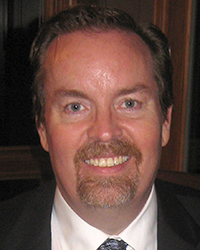
C. Dow Tate
Biography
C. Dow Tate is a journalism teacher at Shawnee Mission East High School in Prairie Village, Kansas, and the director of the Gloria Shields All-American Publication Workshop sponsored by Dallas County Schools. He’s the co-author of Scholastic Journalism, 12th edition. In 2011, he was named a Kansas Teacher of the Year finalist. He was inducted into the Scholastic Journalism Hall of Fame at the University of Oklahoma and was named a Texas Legend, as one of the most influential people in the state’s 75-year scholastic journalism history. He taught 14 years at Dallas Hillcrest High School.
His students’ publications – the newspaper, yearbook and news website — have earned the nation’s highest honors, including the National Scholastic Press Association’s National Pacemaker and the Columbia Scholastic Press Association’s Gold Crown. Tate has been named the Dow Jones Newspaper Fund’s National High School Journalism Teacher of the Year as well as the Texas Max R. Haddick Teacher of the Year. He served as the president of the Dallas Chapter of the Society of Professional Journalists in 1990.
What do you believe is the biggest issue facing scholastic journalism, and what would you do as a board member to address it?
[slider title=”Read more from vice presidential candidate C. Dow Tate” group=”accordion-5″]
Scholastic journalism must continue to be relevant. Faced with the ever-changing landscape of journalism, shrinking elective pools in states with increased core class requirements and growing competition for students with Advanced Placement and International Baccalaureate programs, scholastic journalism faces daunting challenges.
But, as you know, scholastic journalism has never been more relevant. In our classrooms, we provide an authentic learning environment that those Common Core proponents desire.
Our classrooms challenge students to think for themselves. While the research shows that journalism students do statistically better on tests, those students also learn creative problem-solving in our classrooms that make them more valuable in a worldwide marketplace. We also provide the energetic, youthful lab for media where students – who are already immersed in the world of social media and technology — can take hold of the internet and make themselves and journalism marketable. The goal of the organization must be to work to see that its members have the knowledge and freedom to hone those skills. The association must also work at local, state and national levels to make sure others in education understand the value of scholastic journalism as answers to education challenges. The effort will certainly require communicating and partnering with other organizations nationally to spread that word.
As a former journalist and journalism teacher with 25 years of experience, I feel I bring a wealth of knowledge to the position. I don’t see the office as a power grab. Being new to the Journalism Education Association Board, I’d bring a fresh perspective to the challenges. I was raised in a small rural town, taught 14 years in a diverse urban district and another 15 years in a suburban school. I’d listen to others. I know that the challenges vary in regions and states across the country. As an adviser of a successful newspaper, yearbook and website, I value the skills of all types of media and am driven and creative enough to make sure the association is effective, valuable and relevant.
As a board member, what would you do to address the needs of multiculturalism among scholastic journalism educators?
Everyone wants to feel valuable. Much of what we do as educators is making every student feel valuable and connected. Growing up in a small multicultural town in Texas and teaching for 14 years in a diverse urban school district, I’ve lived the challenges of trying to address the needs of multiculturalism in scholastic journalism. I can tell you the challenge is difficult. As a veteran workshop instructor, I also know that diversity means different things in different parts of the country. However, I believe the key is keeping the discussion at the forefront. As a leader of JEA, I’d make sure we continually discuss making staffs and the publications reflect the diversity of each school and community – whether it’s through recruitment, coverage or fairness. To me, making the issue a continual priority speaks to who we are as journalists who champion fairness and accuracy.
As a board member, what would you do to address the needs of scholastic press rights?
Scholastic press rights is another area of continual education. It’s also another area where JEA must look to be creative in its approach. We can make stronger efforts to educate the next generation of administrators. Scholastic journalism could be well-served if we connect with the leaders of graduate educational leadership programs to provide them with the language and knowledge to support and value strong publications.
As a board member, what would you do to promote the needs of journalism educators in middle schools and junior high schools?
With the power of mass communication sitting in the palm of many junior high or middle school student’s hand in the form of a smartphone, the need to promote the need for strong journalism education has never been greater. We need to again be creative, reaching out to English and Social Studies educators who might help teach students the basics of journalism to prepare them for high school. Creative solutions could also come to encourage more collaboration between high school and junior high or middle school instructors.[/slider]

Jane Blystone, MJE
Biography
Jane Blystone, Ph.D. and MJE, serves as JEA’s Regional 7 director, is a member of the JEA Scholastic Press Rights Commission and the JEA Certification Commission. She served as local chair for JEA/NSPA Philadelphia convention and has served as Pennsylvania JEA state director. Honors include JEA’s Medal of Merit, Special Recognition Yearbook Adviser, CSPA’s Gold Key and James F. Paschal awards and NSPA Pioneer Award and the PSPA Keystone Award. Blystone advised journalism students for more than three decades in newspaper, yearbook and literary magazine.
She has served at the PA School Press Association president five times and is currently on their advisory board. She has taught at various summer journalism workshops around the country and serves as a judge for numerous state and regional journalism associations. Currently, Blystone directs the middle level undergraduate and the secondary graduate education programs at Mercyhurst University, Erie, Pa. and serves on the school board in North East, Pa.
What do you believe is the biggest issue facing scholastic journalism, and what would you do as a board member to address it?
The most pressing issue in scholastic journalism today is censorship of student voice. We have seen numerous student publications across the country, even in states where laws are supposed to protect student expression, put under prior review and censorship during the past year. Additionally, schools are dismantling journalism programs under the guise of budget cuts and implementation of Common Core Standards to avoid dealing with students who publish their opinions. I have worked individually and with the JEA SPRC and the SPLC to help students and advisers who are undergoing such censorship. In several cases we have seen administrators back off from such practices. Others are ongoing as I write. I continue to promote quality journalism and student free expression by organizing and posting quality scholastic journalism that is submitted to the JEA SPRC Making a Difference project.
[slider title=”Read more from east regional director candidate Jane Blystone” group=”accordion-6″]
As a board member, what would you do to address the needs of multiculturalism among scholastic journalism educators?
I would encourage and assist advisers to promote recruiting of staffers from a wide variety of cultural backgrounds. We live in a very multicultural society where ethnicity, religion, and life preferences need to be honored. As someone who lives in a multicultural family, I would promote the powerful and positive impact it has made to me personally. Promoting opportunities for students of all backgrounds to experience the power of journalism is critical in our educational system and our society. Promoting the expansion of advisers who come from a variety of cultures can only make our organization stronger and more prepared to meet the challenges we see in education today. As we revise our mentoring and outreach programs, we can make an even broader impact in schools.
As a board member, what would you do to address the needs of scholastic press rights?
As a seated school board member, I have been able to provide some direction to how to handle censorship when dealing with school boards to advisers and students. I will continue to promote scholastic press rights through the JEA SPRC blog and through the Making a Difference project to promote quality scholastic journalism that makes a difference in schools and communities around the world. I will also use my background as an administrator to speak out to administrative groups to share with them the importance of strong student publications within schools. Most importantly, I will get down to the nitty-gritty of helping students and advisers in crisis as cases arise as I have this year. I will continue to help expand the partnership we have with Quill and Scroll as they update guidelines for principals when working with student publications.
As a board member, what would you do to promote the needs of journalism educators in middle schools and junior high schools?
One of the most important things I can do as a board member is provide advisers the tools to assist middle school and junior high school students in learning the world of journalism and by promoting opportunities for middle level students and advisers to learn at national conventions and to compete at national conventions. Training middle level teachers/advisers is critical since middle level certification programs do not often include journalism in any methods courses. As the director of a middle level certification program, I can share ideas and approaches for instituting middle level journalism programs that impact the quality of writing in a school.[/slider]

Brenda Gorsuch, MJE
Biography
Brenda W. Gorsuch, MJE, worked as a reporter for a small-town daily newspaper before becoming an English teacher and Wingspan newspaper adviser at West Henderson High School in Hendersonville, N.C., in 1983. She added responsibility for the Westwind yearbook in 1989, and in 2010 her journalism students created an online publication, WingspanOnline.net. These publications have consistently won awards from state, regional and national scholastic journalism organizations.
Gorsuch has served scholastic journalism in a number of capacities over the past 20 years. She served four years as the chair of the Southern Interscholastic Press Association executive committee from 1996 until 2000 and currently chairs the SIPA Finance Committee. Previously, she served two terms as president of the North Carolina Scholastic Media Advisers Association. She has most recently served as the Region 5/Southeast director of JEA. Gorsuch was the DJNF National High School Journalism Teacher of the Year in 2004 and a JEA Distinguished Yearbook Adviser in 2001.
What do you believe is the biggest issue facing scholastic journalism, and what would you do as a board member to address it?
First the bad news — scholastic journalism appears to be a well-kept secret. Educational leaders and proponents of the Common Core have not yet recognized the vital role journalism instruction can play in preparing 21st Century learners. Administrators struggling to deal with budget cuts don’t understand the value of scholastic journalism and the First Amendment. They seem to be more concerned with appeasing education stakeholders than in creating 21st Century citizens. Parents pressuring their children to take advanced placement courses to get into elite colleges don’t understand the higher order thinking skills developed by students who work hands-on to create newspapers, yearbooks, magazines, broadcasts and websites. Many publication advisers are so weighed down by the day-to-day details of helping students produce media that even they can’t see the big picture and recognize the critical importance of what they are doing. They are frustrated and find little support in their schools and school districts.
[slider title=”Read more from east regional director candidate Brenda Gorsuch” group=”accordion-7″]
Now the good news — scholastic journalism teachers and publications advisers and their student journalists are the answer. Our profession includes some of America’s brightest and best teachers, and our students are doing amazing work. The Journalism Education Association needs to take the lead role in promoting the value of scholastic journalism, in protecting the First Amendment rights of students and teachers, in making journalism instruction the best it can be, and in helping journalism teachers be more successful in the classroom. In other words, JEA needs to be an unwavering advocate for scholastic journalism and for journalism teachers.
More good news — JEA is already taking the lead in a number of ways. Our new curriculum leaders are at work aligning our journalism curriculum to the Common Core. Our conventions and advisers institute provide top-notch learning opportunities. Our Certification Program provides a way for journalism teachers to demonstrate that they have the knowledge and skills to excel in our profession. Our Scholastic Press Rights Commission works tirelessly to find new and better ways to defend the First Amendment rights of students and to fight censorship. Our Digital Media Committee provides invaluable resources to help advisers stay up-to-date with technology. Our Mentoring Program is providing face-to face support for new journalism teachers to help them gain the skills they will need to be successful and remain in the classroom.
But we must do more. For the past three years, the JEA board has focused on “internal” affairs, looking for a new executive director, choosing a host university and restructuring the board for the future. Now we need to get back to advocating for scholastic journalism. Far too many journalism teachers have never heard of JEA. They do not know the resources available to them. They are not aware that they have an advocate. That is why I am running for the new board. I want to continue to use my experience as a classroom teacher, publications adviser and board member on behalf of JEA. After serving on the board for several years, I am even more convinced of the importance of our organization. I believe we need to develop a strategic plan to guide our future efforts. Planning a budget without a strategic plan is a haphazard approach to running an organization. When we get requests for money or endorsements, we need to figure out how, and if, they fit into our plan. I believe every penny JEA raises should be used to advocate for journalism teachers and journalism instruction.
The East regional director is a new board position. I would like to help define the role of this new position as I provide support for journalism teachers in my region. At the same time I want to work with the board to find new and improved ways to tell our story. We have a very good story to tell, but we can make it an even better story. I am excited that we have this new opportunity to evaluate what we have been doing and dream about what we could be doing.
As a board member, what would you do to address the needs of multiculturalism among scholastic journalism educators?
Scholastic journalism teachers and students are hard at work in diverse classrooms all over the country. No two journalism programs are alike. Teachers work in a wide variety of situations and under different conditions. Like the students they teach, they come from different cultural and socioeconomic backgrounds. The needs of a yearbook adviser in Mississippi who runs an extracurricular program in a private school can be very different from the needs of a newspaper adviser in a large Northern Virginia public high school or a broadcast adviser in a Boston inner-city school.
JEA needs to address this diversity. When I first ran for regional director for Region 5, my motivation was to find new ways for JEA to partner with advisers in state and regional scholastic press associations. The directors and leaders of state and regional scholastic press associations better understand the needs of their states and advisers. In the past, these scholastic press associations tended to view JEA as a competitor rather than a partner. Over the past eight years, I have worked to find ways for JEA to partner with state and regional associations. The National Journalism Quiz Bowl that has become a part of our national conventions resulted from our effort to partner with the Southern Interscholastic Press Association. More needs to be done. JEA needs to use these partnerships to find new ways to address the diversity of our advisers and programs.
Our Mentor Program is another way JEA can address the diverse needs of our members. As more and more quality journalism teachers retire, JEA can benefit by finding ways for them to contribute at the grassroots level in helping them support new advisers. I think it is very exciting that some of our mentees have become Rising Stars. Some have already taken on leadership roles in state and regional scholastic press associations. This can only benefit JEA and scholastic journalism in the future. Current efforts to combine and strengthen the Mentor and Multicultural Outreach programs are a step in the right direction. As a board member, I would like to work to make the new plans being drawn up by the Mentor and Multicultural Outreach committees succeed.
As a board member, what would you do to address the needs of scholastic press rights?
The work of the Scholastic Press Rights Commission is one of the success stories JEA needs to tell far and wide. The commission has a plan and process in place to help advisers who find themselves in situations involving censorship and First Amendment violations. As a board member, I would continue to support the efforts of the Scholastic Press Rights Commission, and I would work to find ways to let more advisers know about the resources available to them.
I wholeheartedly support JEA’s partnership with the Student Press Law Center. The two organizations make a powerful team that can educate school administrators and our local communities about our students’ freedom of the press and freedom of speech rights that must be protected. It is important that JEA advocate for the role scholastic journalism can play in civics education as we train our young journalists to be good citizens.
As a board member, what would you do to promote the needs of journalism educators in middle schools and junior high schools?
Middle school and junior high school advisers need access to the resources JEA has to offer. We need to make sure we have quality curricula targeted to middle school/junior high school advisers, and we need to take deliberate steps to educate them about the support JEA can provide them and their programs. Over the past 10 years, I have developed a partnership with the adviser at my high school’s feeder school. My student journalists have supported her students, and I have arranged for her to attend national conventions and state and regional workshops with my students and me. While she will probably never bring her students to a national convention, she is plugged into JEA. I believe this is a model we could use across the country. We have strong high school advisers who should be serving as colleagues and mentors for middle school/junior high school advisers. JEA could facilitate such a plan.[/slider]
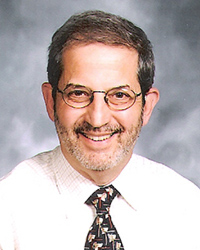
Stan Zoller, MJE
Biography
Stan Zoller, MJE is in his 16th year as a journalism education. Currently a an adjunct professor of journalism at Lake Forest College in Lake Forest, Illinois, Zoller previously taught high school English and journalism at Rolling Meadows (Illinois) High School and at Waukegan (Illinois) High School. During his eight years at Rolling Meadows, his students and The Pacer received a myriad of honors from regional, state and national organizations. The Pacer was a Pacemaker finalist “All-KEMPA” awards from the Kettle Moraine Association. Two of his editors were named Illinois Journalist of the Year in 2010 and 2011, the first time a school has had the JOY in back-to-back years.
In 2010, Zoller was a Special Recognition Adviser by the Dow Jones News Fund and in 2011; DJNF named him a Distinguished Adviser. Prior to entering education, Zoller worked extensively in the media and media relations. He received a “Blue Ribbon Award” for feature writing from the Cincinnati chapter of the International Association of Business Communicators and in 2010 received a Peter Lisagor Award from the Chicago Headline Club for editorial excellence in independent blog writing.
Zoller has been a member of JEA’s Outreach Academy Teaching cadre since its inception in 2007, and served as a member of the Multicultural Commission for nearly 10 years until the Board disbanded it in 2013. He is a member of the Scholastic Press Right Commission and contributes to its blog on a regular basis. Zoller is a frequent presenter at JEA conferences and other scholastic journalism conferences and workshops. In addition to his work in scholastic journalism, he is Vice President / Freedom of Information of the Chicago Headline Club. He also serves on its Foundation’s Board of Directors.
[slider title=”Read more from east regional director candidate Stan Zoller” group=”accordion-8″]
He is married to Laura. They have two sons, Michael, a sports marketing specialist for Northwestern University, and David, a corporate engineer for THK North America.
What do you believe is the biggest issue facing scholastic journalism and what would you do as a Board member to address it?
I think the biggest problem facing scholastic journalism today is unity – or lack of. While the push toward Common Core and unified standards by which student achievement is measured are essential, they appear to be coming at a cost of electives – especially journalism. JEA has done an admirable job in addressing elements of the common core, especially in the areas of technology, communication and critical thinking. However, with the number of programs being cut back or eliminated on the increase, there appears to be a need for both the validation and importance of journalism courses and programs. Additionally, more and more advisers are reporting cases where administrators are practicing prior review, prior restraint or censorship under the ruse that school needs to be positive. To no surprise, the Scholastic Press Rights Commission and the Student Press Law Center continue to set the standard for defense of beleaguered programs. They are, however, only two players. JEA and its members have, to no surprise, been supportive of each other. However, the awareness of JEA and all of initiatives outside the organization needs to be enhanced.
As a Board member, I would encourage development and implementation of initiatives related to the development of partnerships with professional media organization, school Board organizations and school administrator organizations to foster a greater awareness of JEA’s mission, programs and partnerships. This would be detailed in a comprehensive marketing/organizational awareness plan that would identify both current and potential audiences, programs and partnerships to enhance JEA’s position in middle school and high school journalism education. The Board needs to make sure that all of JEA’s programs work together because no one program or initiative is the face of JEA. An interdisciplinary approach to attracting and serving our members is essential to providing not only innovative and comprehensive journalism education, but a free and responsible journalistic experience as well.
As a Board member, what would you do to address the needs of multiculturalism among scholastic journalism educators?
As a long-time member of the Outreaching Academy Teaching Cadre and member of the Multicultural Commission, I am acutely aware of issues facing diversity in not only journalism, but scholastic journalism. As a Board member, my focus would be on working with schools in those districts with a minority-majority population and partner with those professional organizations that serve minority journalists who work in the professional media. I would encourage the Board to reinstate a liaison with the professional media, with a special emphasis on the aforementioned organizations. The liaison would identify partnership opportunities, issues impacting minority in the media and ways professional media organizations could work with JEA on various programs and initiatives.
The Board also needs to re-evaluate the Multicultural Commission so it is far more proactive in attracting and supporting diversity in scholastic journalism. The Outreach Academy has been moderately successful in providing resources for schools with diverse populations and advisers who teach in those schools, but there needs to be a greater outreach for diversity that extends beyond the host city for the spring and fall conferences.
As a Board member, what would you do to address the needs of scholastic press rights?
One of JEA’s strongest suits is its Scholastic Press Rights Commission. Its role and profile are extraordinary. However, more needs to be done, because much in the same way that awareness of JEA and its programs need to be enhanced, so too does the work of the individual commissions, especially among JEA members. While JEA actively promotes the work of its commissions, members may need easier access to its online resources that go beyond the “About JEA” pull-down menu at JEA.org. Needless to say, the relationship between JEA and the Student Press Law Center needs to remain at its current level. This enhanced relationship may be essential as there appears to be an increase in reported cases of prior review, prior restraint, censorship, and administrator control of student media. The Board, working with the state directors, should monitor interference with student media on a regular basis and, working with the Scholastic Press Rights Commission, proactively work with an adviser and program that is facing tighter scrutiny.
As a Board member, what would you do to promote the needs of journalism educators in middle schools and junior high schools?
JEA has done a nice job in developing a vehicle for middle and junior high school advisers and their media programs. As is the case with its overall marketing, JEA needs to actively make its junior and middle school offering known to large audience on a larger basis. JEA should consider working with the National Federation of High Schools in promoting journalism to middle schools. The NFHS provides support and resources for activities and athletics from grades six through 12. Several states also have organizations dedicated to junior high and middle schools in their states, which would be excellent “local” partners for JEA or regional scholastic press organizations. However, addressing their needs go beyond curriculum, program tracks and write-off competitions. United State Census Bureau statistics show that the number of minority students who are at or approaching junior high and middle school age is at an all-time high. A concentrated effort by both the Middle School and Multicultural commissions would be excellent outreach efforts.[/slider]
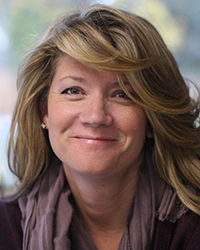
Carrie Faust, MJE
Biography
Carrie Faust, MJE, advises the Summit yearbook, the SmokyNow.com online newspaper, and the Defining Why magazine staffs at Smoky Hill High School in Aurora, CO. Her staffs have earned four CSPA Silver Crowns, two NSPA Pacemaker Finalists, an NSPA Pacemaker, Gold Medalist and All-American critiques, and many state and local awards. She is currently the Region 2 Director for the Journalism Education Association and a member of its Scholastic Press Rights Commission. She has held many positions on the Colorado High School Press Association board including President and is currently the Advocacy Coordinator for CHSPA.
She was an ASNE Fellow in 2005, a JEA Rising Star in 2008, a JEA Distinguished Adviser in 2009, and a JEA Medal of Merit recipient in 2013. She has a Master Journalism Educator designation from JEA, speaks at conferences and workshops around the country each year, and will finish her Master’s of Arts in Journalism Education at Kent State University this spring. Carrie is the mother of two daughters: Carter, 13, and Campbell, 11. She is also the proud owner of a three-pound chihuahua named Booker, given to her by her yearbook students.
What do you believe is the biggest issue facing scholastic journalism, and what would you do as a board member to address it?
[slider title=”Read more from west regional director candidate Carrie Faust” group=”accordion-9″]
The biggest issue facing scholastic journalism is the lack of understanding the rest of the world has for our efforts. As an organization, we continue to forge ahead and do great work for our members and their students, but we essentially “preach to the choir” as we have for years. JEA members are not who need to hear what we have to say. Advisers who aren’t part of our organization, principals and administrators whose programs don’t know us, are who need to know what we’re doing.
These people live in a world of scholastic journalism so unlike ours. Fear, intimidation, lack of respect and censorship are far too common in programs outside the JEA bubble.
We need to continue moving forward on the momentum gained from the recent RFP process to forge partnerships with other education organizations and journalism organizations to raise awareness of our programs. It’s time for a full-scale PR campaign that targets every principal and administrator and graduate education program in our country. With that sort of effort, we will be able to reach the people who really need us.
As a board member, what would you do to address the needs of multiculturalism among scholastic journalism educators?
I teach in a minority-majority high school. We work tirelessly to make sure our classes, clubs and teams are comprised of students that help accurately reflect that diversity. Unfortunately the grown ups in our school community do not reflect our population. As a school we have turned our efforts toward the ethnic and racial diversity of our faculty and staff and are actively recruiting teachers of color so that our kids grow up around successful people who look like them. This is the same sort of initiative that needs to happen in JEA.
When we began the Outreach Academy and the Multicultural commission, our intentions were good. And, the people who have worked tirelessly toward these efforts are to be commended for a job well done. It is time, however, to reorganize these efforts around three of our initiatives in hopes of better achieving our multicultural goals: the curriculum initiative, the mentoring initiative and the partnerships initiative.
I believe our curriculum initiative is the single most effective tool we have to help and retain our new advisers including our advisers of color and all advisers teaching in diverse schools. As the mentoring program reorganizes around a 21st century educational technology model and enlists more intensive cooperation from state and local organizations in the support of their new advisers, the curriculum will be a powerful tool in growing our number of tenured advisers. Finally, as the board moves forward to seek out and create partnerships with educational organizations, professional media outlets, and non-profit advocacy groups, we will be able to reach people who are currently beyond our fold. When these three initiatives come together toward a common goal, we will be successful.
As a board member, what would you do to address the needs of scholastic press rights?
I believe in our duty to fight for the rights of scholastic journalists. That is why I became a member of the JEA Scholastic Press Rights Commission. I think that our obligation to address the needs of scholastic press rights will only be met through multiple avenues:
- Continue our support of the SPLC and strengthen our partnered response to the issues that arise
- Encourage our members to become CJE and MJE certified to promote professionalism in our advisers
- Reach out to professional journalism organizations to publicly support and fight for programs under scrutiny
- Create model legislation and processes for states to work toward anti-Hazelwood legislation
- Call for a Supreme Court review of the Hazelwood decision
- Encourage states to follow Colorado’s lead and create Press Law Certification programs for both advisers and administrators
- Work with the 45Words group to make sure student journalists know their rights, recognize censorship and know how to fight it
As a board member, what would you do to promote the needs of journalism educators in middle schools and junior high schools?
I am lucky to live in a state with a thriving middle school and junior high journalism culture. I work closely with some of the best in the nation right in my own backyard who have taught me that middle school journalism students can be just as dedicated and professional as their high school counterparts.
Our middle school/junior high initiative should not be separate from the rest of our initiatives. Our advisers are taught the standards of professional journalism and they teach our high school journalists those standards. So it goes with the best of our middle school/junior high programs and so it should with all our middle school/junior high programs.
The standards of great scholastic journalism do not change from the high school to middle school/junior high level, nor should our dedication to this part of our community. We don’t need a separate dedication to middle school/junior high so much as we need a constant dedication to middle school/junior high.
Our new board configuration provides that the middle school/junior high implications will be discussed with every board undertaking. And I will ensure, as I have promised my friends, my voice is a strong advocate for middle school/junior high concerns during those discussions.[/slider]

Jonathan Rogers, MJE
Biography
This year is my tenth year advising high school publications and teaching Language Arts classes. I advise The Little Hawk newspaper, LH Magazine, www.thelittlehawk.com website and The Red and White yearbook. It is my first year advising the yearbook at City High. The Little Hawk Teaching Website is https://sites.google.com/site/littlehawkjournalism/
The Little Hawk has earned a Pacemaker (2012) and the Little Hawk website has been an Online Pacemaker Finalist the past three years. These publications have earned top placings in Best of Show competition and students have been honored with top awards from the NSPA Design of the Year and Photo of the Year competitions, along with dozens of individual honors at the state level.
Before teaching, like most advisers, I had a great experience on my high school publication. It was with the KHS Smoke Signals based out of Keokuk, Iowa. For the Smoke Signals, my education began when I walked into a room that wasn’t like any other in the high school. I fell in love immediately and worked as a sports reporter, editor and executive editor my senior year under the great advising of Laura Wolffe and Rex Muston. I also had the chance to meet Jack Kennedy for the first time at the IHSPA state conference and he has been inspiring me and mentoring me for the last twenty years.
[slider title=”Read more from west regional director candidate Jonathan Rogers” group=”accordion-10″]
After high school I focused my studies in Communication, English and golf at Southwest Missouri State University, which is now Missouri State University. I had looked at other universities, but Missouri State offered me a scholarship to play golf and the campus impressed me as well. During college I wrote mainly sports stories for the Southwest Standard and the Springfield NewsLeader.
After graduation from MSU, I spent eight months abroad in Scotland and then landed an internship with E/The Environmental Magazine outside of New York City. For E, I wrote stories about ecoresorts, snowshoeing in Vermont, and reviewed books. After only finding a low paying fact checker job at Travel and Leisure Golf Magazine I went back to the U of Iowa to pursue my Masters in the Art of Teaching English. I guess I failed the poverty test of becoming a professional journalist. After earning my MAT at Iowa as a Pi Lambda Theta Honor student, I accepted a job teaching in Ridgway, Colo. and advised The Demon Press for four years.
Advising publications in a little ski town that had a stapled together 8.5×11 inch publication with budget of zero was a challenge. My room was a temporary building with wires hanging from the ceiling, but I remember asking the staff if they wanted to make a real paper and they were all about it. At the beginning, I was surprised by the resistance to having a real newspaper. How could anyone not understand how great it is to have a high school publication?? I remember fondly the students setting up a coffee shop vibe in the newslab, a Demon Press chair of knowledge that Vance Hawk would sit in and ponder his story ideas and the art teacher being so happy that we were bringing more creativity to the school. We didn’t produce a Pacemaker publication by any means, but I learned so much from my students and from my JEA mentors Jack Kennedy and Mark Newton.
When the journalism position at Iowa City High came open I jumped at the chance to come home with my family to Iowa. In the five years at City High The Little Hawk has went from a program of ten students to a program of over 50. I have worked to continue my growth as an educator through pushing digital media skills, and helped scholastic journalism as the IHSPA president and a JEA Digital Media Board member.
Below is the list of awards they have won. Their work has been rewarded by contests, but more than anything it gives me a great thrill to see current students being accepted into great programs like the U of Missouri journalism program and others where they continue to use their skills.
I have also worked to develop a Google Site with resources for my students. It is in the first year of development, but I hope in the next few years to be a resource filled with everything one of my students needs to work on The Little Hawk. It is currently used for our weekly response form, outlines, staff handbook, syllabus, and a variety of other resources.
My other project is to develop a TILED or SCALE UP collaborative work space in our middle room. This space would include a teaming table with connections for laptops or tablets that are synced to a flat screen monitor. There would also be two moveable desks, two moveable chairs and a half dozen stools with a coffee table for collaboration. On the walls would be painted SEEK TRUTH and the code of the journalist.
What do you believe is the biggest issue facing scholastic journalism, and what would you do as a board member to address it?
The biggest issue I see facing scholastic journalism is preparing students to become 21st century journalists. Scholastic journalism is lagging behind the curve in training students for jobs and careers in the new digital world.
This past year only six multimedia stories were submitted to the IHSPA spring newspaper contest. I think it is a huge disservice to our students to not be giving them 21st century digital journalism skills. At the University of Iowa many journalism classes are not accepting stories without a digital media element.
To begin solving this problem I have started making a Twitter list and a Storify. I would also address this issue by challenging more teachers to start requiring digital media elements in their students stories and pushing their districts to provide them with more digital equipment. It is also important to think about how classrooms are structured. I have applied for a grant to create a TILED or SCALE UP classroom. This learning environment is built around the use of technology, collaboration and creating a dynamic learning environment. These spaces also have a WOW factor that would be a great recruiting tool and show administrators how perfect journalism is for 21st century education.
As a board member, what would you do to address the needs of multiculturalism among scholastic journalism educators?
Bringing more minorities into journalism programs is a problem I am working on this year at City High. We have met with AP teachers and middle school teachers to brainstorm ways to encourage more minorities to come out for publication classes. We have decided to make a joint effort as a 7-12th grade department to encourage more minorities into taking AP and journalism classes. This encouragement from faculty combined with letters home and current staff members going around to classes is our plan at City High. As a board member I would be happy to share our recruiting efforts with other schools.
As a board member, what would you do to address the needs of scholastic press rights?
Freedom a speech is under attack in our high schools and it is a rare principal that understands the importance of freedom of speech and the rights of students in public schools. I think the best we can do as a board is to inform teachers and administrators of their rights and share the good stories of how scholastic press rights are being used in positive ways by schools. I have just heard of schools starting 21st Century Communication Academies that pride themselves on teaching students their rights and using them to develop a wide array of skills. It is also important to show schools examples of how schools and student publications work well together. On the end it is also important to help the student publications that are in trouble and make sure they have the resources and support to try and keep going, while under attack.
As a board what would you do to promote the needs of journalism educators in middle schools and junior high schools?
This is an area I am also excited to try and develop in the Iowa City schools. We currently do not have any middle school journalism classes. The first step would be to train or mentor current middle school teachers in journalism. Giving the teachers the skills and showing the administration how middle school programs can work sets up an important building block for high school programs.[/slider]

Tracy Anne Sena, CJE
Biography
Tracy Anne Sena is the 18-year founding adviser of The Broadview newspaper and website at Convent of the Sacred Heart HS in San Francisco, as well as the school’s educational integration coordinator. A frequent presenter at journalism and technology conferences and judge for local and national journalism organizations, Tracy is the 2007 California Journalism Educator of the Year, JEA Medal of Merit recipient, Dow Jones Newspaper Fund Distinguished Adviser and an NSPA Pioneer. She is the past president and current board member of the Journalism Education Association of Northern California, advisory board member for the Center for Scholastic Journalism at Kent State University and past first vice-president of the Columbia Scholastic Press Association Advisers Association.
A 12+ year member of the JEA Scholastic Press Rights Commission, Tracy has moderated a private school press rights forum at almost every JEA/NSPA convention for almost 10 years and for the last five at Columbia Scholastic Press Association conventions. She frequently works with private school advisers and staffs in negotiating press rights.
Although her staff members have been awarded a bevy of distinctions from Best of Show to the Pacemaker to CSPA Crown and Circle Awards and JEA High School Journalist of the Year, Tracy is most proud that her students are currently second-round finalists for the First Amendment Press Freedom Award. Through consistently thoughtful, careful reporting and negotiating with its board of trustees and multiple administrators, The Broadview has reversed the administration’s position from an initial stance of total prior review and occasional restraint to a current policy in which content is only read after it has been published.
[slider title=”Read more from west regional director candidate Tracy Anne Sena” group=”accordion-11″]
Having completed a master’s degree in instructional technology in January, Tracy is now using skills acquired in her coursework to additionally teach and advise a fledgling news site for students in seven time zones through the Online School for Girls. She also produces instructional videos on a wide range of journalism topics which are publicly accessible on YouTube. She is known within the JEA community for her frequent posts on the group’s listserve and the style and editing quizzes she emails out to over 300 advisers each month. She also posts daily on Twitter @tasena.
What do you believe is the biggest issue facing scholastic journalism, and what would you do as a board member to address it?
In an age of shrinking school budgets and a national trend in which we are losing our ability as Americans to have thoughtful, meaningful discourse about subjects on which we disagree, school publications provide one of the best places for participatory civics as well as a platform to teach teenagers in our schools how to disagree agreeably — and how to sign their names with courage on those articles, opinions and posts. Yet, scholastic journalism is increasingly put on the chopping block in an ill-conceived attempt by school boards and principals to balance the bottom line and give the appearance of calming dissent within the school community. Consequently, journalism programs are disappearing at an alarming rate across this country, and that is the single biggest issue we face and must address.
The JEA Board should address these issues directly by presenting at national administrator and school board conferences, as well as producing scholarly work for professional journals aimed at secondary principals. As journalism educators we understand how our programs fulfill the goals of the Common Core Curriculum and require design thinking, but this message must be broadcast widely.
As a JEA Board member, I would have the credentials to address the need for strong scholastic journalism programs within the larger secondary school community, along with advocating the positive academic outcomes of students enrolled in these programs.
As a board member, what would you do to address the needs of multiculturalism among scholastic journalism educators?
I am proud that I had the opportunity teach online journalism skills to advisers of predominately native-population schools in Hawaii three years ago as part of a JEA Board initiative — especially as a student from one of those schools was named Hawaii’s 2013 Journalist of the Year and went on to be named one of six national runners-up.
Even though the other three advisers and I volunteered our time, such an endeavor still required a substantial financial investment from JEA in travel costs for the trainers and teachers to travel between islands.
This trip was part of an initiative to bring training directly to schools that often are unable — either through budget or travel restrictions — to travel to student conventions or adviser trainings. When the students we most want to reach are simply not in attendance at our national conventions, it means we must continue to strategize and invent better ways to extend our outreach.
Utilizing live streaming for conventions and trainings is one practical, low cost way to invite a more diverse student population to attend conventions virtually and/or bring “at home,” online journalism “camps” at their own schools’ campuses. Creating virtual conferences or virtual camps could bring high-quality JEA training directly to students at a fraction of the cost — and the technology exists to do it right now.
As a board member, what would you do to address the needs of scholastic press rights?
I am a long-time advocate of scholastic press rights and I am most proud that under my guidance my students have eliminated prior review and restraint in my school — something that very few private schools, even in California, enjoy.
As a board member I plan to continue to regularly present on student press rights at JEA/NSPA conventions and continue to contribute to Scholastic Press Rights blog and podcasts. Additionally, I will be a strong proponent for JEA’s continuing financial support of the Student Press Law Center at the highest level possible.
As a board member, what would you do to promote the needs of journalism educators in middle schools and junior high schools?
Having spent my first 10 years in education teaching middle school students, I understand that tweens and young teens have a great deal of ardor and passion for endeavors to which they attach themselves — which makes them great candidates for fueling a robust journalism program. However, few middle school and junior high teachers are trained for scholastic journalism, which means if we are to promote to growth of these programs, JEA must have better training and outreach options available to these teachers, both at our conventions and in our summer workshops.
Asking our state organizations to reach out to middle schools (especially those which feed into already-existing programs) would be one way to increase a “vertical integration” of scholastic journalism from 7-12. Not only could this grow scholastic journalism programs in the lower grades, it could additional serve ensure high interest and enrolment in high school programs when middle and junior high students matriculate into our schools.[/slider]
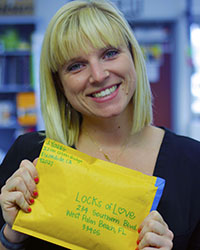
Jessica Young, CJE
Biography
Jessica Young has been involved in scholastic journalism since she joined her middle school yearbook staff in the eighth grade. In high school, she was the editor in chief of The Umpqua yearbook and the photography editor for the Orange R newspaper in Roseburg, Ore. She is a graduate of San Diego State University, where she majored in Journalism and Anthropology. She received her Masters Degree in Education from the University of California, San Diego. She has been teaching and advising at Orange Glen High School in Escondido, Calif. for six years.
Young’s involvement with the Journalism Education Association began after her first year of teaching. She was selected as a Reynolds Institute Fellow and participated at ASU, Phoenix, in 2009. Through this experience, she made contacts with other scholastic journalism teachers and media professionals. The Reynolds Institute also provided her with a wealth of resources and the necessary encouragement to begin attending JEA/NSPA conventions. Becoming a member of the JEA listserv, Young forged connections with the JEA Mentoring program and began bringing students to conventions and workshops. She is also a frequent contributor to the listserv, where she shares her knowledge and resources with her peers. She was a 2010 recipient of the JEA Future Teachers Scholarship. In 2011, the California Newspaper Publishers Association awarded her a professional development grant, which she used to attend workshops over the summer for both newspaper and photography. In the spring of 2012, Young was named one of eight recipients of the JEA Rising Star award, and Orange Glen High School received the First Amendment Press Freedom Award. She has been a Certified Journalism Educator since 2010 and took the Master Journalism Educator exam at the Fall Convention in Boston, Mass.
[slider title=”Read more from west regional director candidate Jessica Young” group=”accordion-12″]
Young frequently presents at conventions and specializes in staff management, team building and community maintenance. She also participates in judging the write-off competitions, primarily for photography. She teaches each summer at a variety of Walsworth Yearbook camps for both advisers and students. She also works with the newspapers2 journalism camp program in Southern California. She is the current San Diego JEA President, as well as the co-chair for the 2014 Spring JEA/NSPA High School Journalism Convention. Young also serves on the Board of Trustees and Directors for the Quill & Scroll International Honor Society and the Walsworth IdeaFile Advisory Board. She is a frequent contributor to both the JEA Mentoring Matters Blog and the Walsworth IdeaFile website and magazine.
At school, Young advises the Torch yearbook and the Musket newspaper and teaches photography. Young believes in providing access to all students. With more than 80 percent of its students receiving free or reduced lunch, Orange Glen High School has the lowest socioeconomic status of all schools in San Diego County, but this does not prevent her from giving them the most educational opportunities available. Along with two dozen other teachers from her district, Young is part of the Leading and Learning Cohort. This professional development group focuses on teaching 21st century skills across content areas to English Language Learners. Additionally, Young is the leader of the Visual and Performing Arts Professional Development Community on her campus. In this role, she works with other arts teachers to improve literacy support and apply the Common Core Standards in the arts classrooms. Young also works with the California State University teaching credential program, coordinating the placement and support of all teacher candidates on the Orange Glen campus.
Young believes in teaching by doing. Her classroom is one that is student-centered and student-run. She instills strong leadership skills in her students and facilitates a classroom community that is caring, supportive and challenging. Icebreakers are a daily occurrence in her classroom, as are cupcakes, puns and country music dance parties. Young has worked hard to model effective leadership for her students. She stays active in her school community and embraces opportunities to positively influence her environment. As part of the JEA community, Young feels that she has the necessary knowledge, skills, experience, dedication and energy to be an exemplary member of the JEA Board.
As a new professional, she has direct experience with the impact changing media has had on the journalism community. Young was completing her degree as social media burst onto the scene, forever changing the way that consumers gather their news. Young has consistently made a practice of incorporating new media and technologies into her classroom. Despite budgeting shortfalls, she has figured out how to make technology available to her students. Young not only understands the importance of technology but also knows how to acquire resources, even when budgets are tight (or nonexistent).
Young’s tenure in scholastic journalism has made her a valuable resource to other professionals. Even though she is relatively new to teaching and advising, she has had innumerable experiences that have made her a stronger educator. Through working at a low-income school with a large English Language Learner population, rebuilding a struggling media program and helping facilitate a shift in technological perspective, Young has learned a lot in six years. Her knowledge will help her not only support the JEA Board through its current structural transition but also be able to act as a resource to all advisers within her region. Young currently maintains a Google Drive archive, where she shares and stores all of her teaching materials for others to be able to access and use in their classrooms. Young firmly believes that resources should be shared, freely, in order to promote student and teacher success in the classroom.
Personal experience has taught Young the value of support and resources. Her work with the JEA mentoring program, as well as her on-site student teachers, has shown her how much impact personal connections can have. Knowing that there is someone who will listen, offer encouragement and provide feedback and suggestions is a reassurance that every teacher needs. Young is that person at Orange Glen. Young is that person in San Diego. Young wants to be that person for the West region.
What do you believe is the biggest issue facing scholastic journalism, and what would you do as a board member to address it?
Teacher support and teacher retention are among the most significant issues that scholastic media advisers face. When I think back to my first years of teaching and advising, I was at a loss for what to do. I inherited a program that was in shambles, and I didn’t know how to even start putting it back together. I was fortunate that I was exposed to the Reynolds Institute and the JEA Mentoring program–without those resources, I can honestly say that I don’t think I would still be in the classroom today. My entire career has since been defined by my willingness to ask for help when I need it and provide assistance to those who can learn from my experiences. No one sat me down and taught me how to be a good teacher or adviser—I have learned by exposing myself to the incredible talents in the JEA community and on my school campus. I am ready to share those skills and encourage others to make a career out of advising.
Teachers need to know that there is someone on their side who has been in their shoes and understands the challenges they face in the classroom. On most campuses, there isn’t another teacher that knows what it is like to advise yearbook, broadcast, web or newspaper (or all of those at the same time). Providing support from beyond campus is only a small part of what I would hope to do as a JEA Board member. Not only would I provide a friendly face and open ear, but I have made all of my teaching and advising resources available through Google Drive, which I openly share with anyone who asks. These practical resources can help with the day-to-day affairs in the classroom so that advisers can start to piece together their long-term plans.
My involvement with JEA has made me a better teacher, and I know the value of the programs and services that the organization can provide. In order to support classroom teachers, I would do my best to make these resources accessible and easy to use. I know firsthand the value of attending conventions, workshops and webinars. As a board member, I would make increasing attendance at these kinds of events an explicit goal, especially for newer advisers. Getting teachers involved in JEA early will provide them with the support needed to maintain their staffs and make advising an enjoyable and rewarding career. If we want to keep teachers in the classroom, we need to help them in whatever ways we can.
In addition, I am a strong supporter of the JEA Mentoring program. Having another individual, with advising experience and a history in the classroom, who can physically meet face-to-face with an adviser, is an asset. In the two years I spent with my mentor, Konnie Krislock, there were times when all it took was a phone call to hash out my struggles. Other times, she was a guest lecturer in my classroom. On many occasions, she acted as a sounding board for my students, offering them a perspective that was different from my own. But most importantly, she became a friend and supporter of my students, our program and myself. When we faced issues and challenges, we often asked ourselves, “What would Konnie do?” Without a mentor, it is unlikely that our publications would have achieved the level of success they have today.
As a board member, I can speak to the value of the support programs that I have been a part of, and I will work to make them sustainable, equitable and accessible. I know that budgets are tight and funds are at a constant shortage, but those challenges have not stopped me from reaching success in the past. I am a skilled problem solver and I will look for ways to find the resources needed to support integral programs.
Providing the teachers with the support they need in the classroom is vital. Journalism programs don’t have the opportunity to grow if there is a revolving door on the adviser’s position. When we look to the leaders in the scholastic journalism community, it’s not hard to see that the strongest programs are led by advisers who have been in their positions for a long time–advisers who have figured out what works and what doesn’t, and who are secure in their positions and know how to navigate their school community. I feel that JEA needs to play a role in offering support to all programs, fledgling to veteran, to provide advisers with the tools they need to be successful. We can’t teach students about what it takes to practice great journalism if we don’t practice supporting great journalism teachers.
As a board member, what would you do to address the needs of multiculturalism among scholastic journalism educators?
The vast majority of my teaching experience has occurred in multicultural environments. Both of my teaching assignments have been in low-income communities, with high numbers of English Language Learners and students at risk for school failure. Prior to teaching, I also coached students in other, more affluent districts, providing me with a wide range of experience. During college, I was a resident advisor, exposing me to even more cultural, ethnic, and socioeconomic diversity.
I chose to minor in Anthropology because of my fascination with culture, beliefs, experiences and practices. This passion that I developed during my undergraduate studies is something that carries over into my teaching practice today. I function on a very broad definition of multiculturalism–it’s not just about race, or ethnicity, or socioeconomic standing. To me, multiculturalism is about the story an individual brings to the table–the experiences he or she has had and how those experiences have shaped his or her beliefs and practices. In my mind, it is the role of educators to teach students to understand and appreciate how powerful our interactions with other people can be, and be grateful for the lessons that can be learned from those interactions. My classroom is a community where every voice is valued.
In order to increase multiculturalism in scholastic journalism, I think that educators need to make their courses accessible. Journalism needs to be a class where any student can find success, not just students who are naturally motivated and gifted writers. That means that the curriculum for the course needs to have support and scaffolding built into it for students who may struggle and options for acceleration for those who excel. My experience working with English Language Learners and at-risk students has helped me figure out how to make material meaningful, engaging and approachable for students with a variety of skill levels. My work with teaching candidates and the mentoring program has shown me how to support educators and what effective modeling looks like on a peer-to-peer level. I am confident that I can assist other educators in tailoring their curriculum to meet the needs of a wide range of students.
My approach to content, coupled with my belief in fostering community, make my support of multiculturalism two-fold. I think that we need to structure classrooms in a way that creates a welcoming, supportive and caring environment while providing material that is at the appropriate level of difficulty for our students. By establishing strong classroom communities, we can then encourage students to take academic risks, try new things and practice the skills we are introducing them to. When students feel that they are in an environment that is safe and supportive, they are more likely to stretch themselves beyond their comfort levels.
As a board member, I plan to support multiculturalism in a number of ways. The Outreach Program can assist teachers that work in diverse school environments. The more involvement we can facilitate in the JEA community, the richer our community becomes. Endeavors like the Mentoring Program can target certain types of communities and schools. The JEA curriculum initiative can offer lessons and strategies for working with a variety of learners in the classroom. Finally, there are a number of grant and funding opportunities out there for teachers and students that are part of highly diverse communities. Connecting those eligible with these kinds of opportunities would be a significant step towards enriching the JEA community. As a member of an under represented community, I am familiar with the nuances of navigating funding applications and unearthing resources. I will act as a resource and liaison for others who need assistance in mobilizing their journalism communities.
As a board member, what would you do to address the needs of scholastic press rights?
Educators in California are fortunate that the state education code has established policies that provide explicit protections for journalism advisers and their programs. Even with these safeguards, teachers still have many battles to face. Simply because there are guidelines in place does not mean that administrators or the general public understand their implications. It is important that advisers not only know their rights but also understand the rights and liabilities of all the stakeholders involved. Acts of censorship limit students’ learning opportunities and place administrators in precarious legal positions, making them liable for content they review.
Even though California’s education code has outlined explicit protection for journalism advisers for many years, many of my colleagues have come under fire from their districts during my tenure in the classroom. Protections for charter schools and other nontraditional school formats were not explicitly identified in the original education code, leaving many advisers unprotected by the letter of the law but not by the intent. Thankfully, support from State Senator Leland Yee has helped update the educational policy to include protections for charter and private schools, allowing advisers to encourage their students to pursue solid journalism without fear of reprisal. These efforts took place in California over the last ____ years, and have set a clear precedent for the protection of scholastic journalism programs and their advisers.
Teaching proper ethics and moral journalism practices is also key in supporting and protecting the rights of student journalists. Reporters need to know that, while they have the same rights as their professional counterparts, they must also follow the same professional standards in their practice to maintain their protections. Providing journalism advisers with the materials to teach sound journalistic practices will ensure that the work of scholastic journalists will maintain its integrity should it ever come under fire from administrators or other critics.
In the instance that students do face censorship issues, they need to be aware of their resources. The JEA board should create an initiative to provide all active members with a copy of the Principal’s Guide to Scholastic Journalism, in either print or electronic form. This publication clearly outlines the role of the student press and its relationship with school administrators in terms that both principals and students can understand. This resource will provide teachers and students with an effective tool for starting a conversation about press rights. Should these conversations prove to be unsuccessful, students need to feel empowered and supported. They must know that the Student Press Law Center and its staff are available to assist them in the pursuit of the truth and the right to publish their work.
As a board member, I would work to establish a supplemental guide (in addition to the Principal’s Guide) for advisers who want to forge stronger relationships with their administrative teams. I have been fortunate enough to create a cooperative and supportive relationship with my principal and school board, but it was not an agreement that came easily. There were times that I faced threats of censorship, but because I was knowledgeable about my students’ rights, I was able to support them in their efforts. Having worked to build and maintain a solid relationship with my administrators, I am familiar with what this requires. Additionally, I know I can lean on my principal and his experiences, concerns and challenge in order to incorporate an administrator’s perspective and considerations into my suggestions for advisers.
Finally, JEA has established a curriculum initiative as well as a commission for student press rights. The board should further support those projects, providing resources and allocating funds, to ensure that the materials that each operation provides become assets in all active members’ classrooms. As efforts with the curriculum move forward, especially with the implementation of the Common Core Standards, it will be crucial to include lessons on ethics and press rights and their relationship to education.
As a board member, what would you do to promote the needs of journalism educators in middle schools and junior high schools?
During my tenure at Orange Glen, I have worked hard to forge relationships with our feeder middle schools. Each semester, my staff hosts a shadow day, when students from the middle schools spend the day alongside one of our staff members. Anytime my publications staffs take field trips I also extend the invitation to my colleagues at the middle schools, encouraging them to send students or attend themselves. My students relish the opportunity to be role models and examples for younger students and are incredibly excited when they get to share the experience of being on staff with the students when they enroll in the class when they get to Orange Glen.
I have been a part of the planning committees for several middle-school oriented convention activities. For the Anaheim convention, I worked to help create specific sessions geared towards middle school students. I’ve also worked with advisers from middle school publications, helping them tailor their curriculum to meet the needs of their students and prepare their classes for journalism at the high school level. My yearbook sales representative has a large number of middle school accounts and I frequently share my resources and experiences with advisers at these schools, helping them determine what will make their classrooms successful working environments for scholastic journalism.
I don’t think the needs of middle and junior high school staffs and advisers are drastically different than those of high school advisers. No matter where you teach, good journalism is good journalism. Working to teach students important skills early on will only serve to build a stronger scholastic journalism community, with deeper roots and a broader reach. Budgeting and schedules make it difficult to cultivate journalism electives at the middle school level, but with the implementation of the Common Core, it will be virtually impossible for educators to deny the value of the 21st century skills that journalism fosters. Effective writing, researching and interviewing are valued across the content areas and the new standards will allow teachers from all disciplines to approach their subjects through a journalistic lens.
Scholastic journalism is in an advantageous position during this shift in educational pedagogy and curriculum. Lifelong learning skills shouldn’t be taught in isolation but practiced holistically. Introducing younger students to informative materials, different styles of writing and a variety of ways of communication is going to provide them with a solid foundation of knowledge. It is my believe that incorporating and supporting journalism programs at the middle and junior high school level will become less of a battle as the Common Core rolls out across the country.
The JEA board can assist the younger scholastic journalism community in a number of ways. Aligning current curriculum initiatives to the Common Core standards will help significantly. In order to make this effort relevant to middle school advisers, the standards for grades 6-8 will need to be incorporated into this effort. Additionally, addressing the unique challenges of a middle school scenario will be important. As a board member, I will help craft supportive materials that approach journalistic skills through at 6 to 8 grade perspective. I will also work to help current journalism programs develop a recruitment initiative that allows them to reach out to middle schools in their area and draw younger talent into their programs.[/slider]
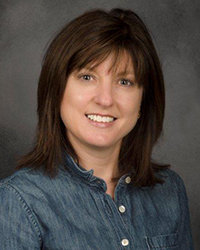
Erin Coggins, MJE
Biography
Erin Coggins, MJE has advised yearbook, newspaper, and online journalism for 12 years at Sparkman High School in Harvest, Ala. Coggins has a BA in Communications/Public Relations from the University of Alabama and worked for NASA Technology Transfer and local newspapers before entering the field of education. She holds a BS in Language Arts Secondary Education, a MA in Secondary Education, and will complete an Ed.Ms. in Curriculum from Arkansas State University in July 2013.
Coggins was awarded the Columbia Scholastic Press Association’s Gold Key in 2007, Alabama Scholastic Press Association’s Adviser of the Year in 2002, 2005, 2011, and 2013, and was named a Dow Jones Special Recognition Adviser in 2008 and a Distinguished Adviser in 2011. She served as the Alabama Scholastic Press Association’s President of Board of the Directors from 2007-2011 and remains on the Board as Past President. She is on the Southern Interscholastic Press Association’s Executive Committee. Coggins judges for CSPA, NSPA, and state associations as well as presents both newspaper and yearbook sessions at national, regional, and state conventions. Coggins created the Journalism Ambassador Program for Madison County Schools in 2013. The organization currently serves four elementary schools and five high schools from a surrounding county.
[slider title=”Read more from professional support director candidate Erin Coggins” group=”accordion-13″]
Coggins is married to Jamie Coggins, Sparkman High School’s head boys’ basketball coach. The two love to travel, attend sporting events, and discuss current issues.
What do you believe is the biggest issue facing scholastic journalism and what would you do as a board member to address it?
The biggest issue facing scholastic journalism today is the elimination of journalism courses for credit. While at the annual Alabama Scholastic Press Association’s spring convention it came to my attention that a school in my area lost credit for their journalism courses. With the new Common Core Standards taking affect in most states, squeezing out elective credit, this is happening all over the country. As the Director of Professional Support, I would educate advisers, administrators, and board members about the benefits of journalism. These benefits for students involved in scholastic journalism include better test scores, better overall grade point averages, and solid writing and interpersonal skills.
I do this in my school district through the Journalism Ambassador Program. My staff and I work with our feeder schools to start journalism programs. In just three months, we helped two elementary schools publish a school newspaper for the first time and are currently working on getting each school an online newspaper. To me, it is vital to show school administrators and school boards the impact scholastic journalism has on students and the schools in their districts. This program can be implemented easily and as a board member, I would help any adviser or district who was interested in establishing a Journalism Ambassador Program. As a public relations major and soon to be Curriculum Specialist, I would also use my skills to create websites, blogs, or discussion boards for the purpose of educating educational leaders on journalism curriculum and the new Common Core Standards in an effort to save scholastic journalism programs around the country.
As a board member, what would you do to address the needs of multiculturalism among scholastic journalism educators?
Our school motto is Diversity is our Strength. It has become the motto in our newsroom as well, and it works. My advice to advisers on how to recruit and maintain these students is: offer a hands-on learning program where the staff can be one big family. Students want to be a part of that. With this being said, I would communicate to advisers the importance to have as many viewpoints as possible when working on student media/publications. Advisers and their staffs should ensure that all populations in their school are covered as well as the issues that affect all the populations of the student body. When students from diverse backgrounds see that their thoughts and interests matter, they will feel more welcome in joining a staff.
Being from Alabama, I am familiar with the Multicultural Journalism Workshop that takes place on the campus of the University of Alabama every summer. I have seen the results of this program for my students who completed it. As a board member, I would serve as an advocate for these students and educate advisers on what they can do at their school to recruit and maintain students from diverse populations.
As a board member, what would you do to address the needs of scholastic press rights?
The first avenue to take in addressing scholastic press rights is to establish open communication between advisers, staffs, and administrators. The more trust and understanding between these two entities, the easier it is to have discussions about scholastic rights. Offering advisers tips on how to talk to their principals and superintendents, offering roundtable discussions for administrators at conferences, and educating administrators about scholastic press law via a website, pamphlet or online discussions are just some of the ideas I would like to see implemented through the Journalism Education Association. Knowledge is power and both administrators and advisers should be knowledgeable about scholastic press rights.
Although censorship and the elimination of scholastic journalism programs are happening all the around the country, I feel it is even more necessary to educate the Southeastern portion of the United States where conservatism on students’ rights is alive and well.
As a board member, what would you do to promote the needs of journalism educators in middle schools and junior high schools?
When journalism was threatened with elimination in my state, I immediately met with board members to discuss the importance of scholastic journalism programs. After this meeting, I started the Journalism Ambassador Program for our school district. This program works with elementary and middle schools to establish a journalism program, including newspaper, online publications, and yearbook advising. As Director of Professional Support, I would like to take this program to the national level, giving middle school and junior high advisers support and the encouragement needed to start and maintain a scholastic journalism program.
Direct marketing to middle schools and junior high schools could possibly increase membership in national and state scholastic press organizations which in return could encourage the success in building of these programs.[/slider]

Megan Fromm, CJE
Biography
Megan Fromm, Ph.D, is a Certified Journalism Educator, the news literacy curriculum leader for JEA, and a member of the Scholastic Press Rights Commission. She is an adjunct professor at Johns Hopkins University, where she teaches online courses in digital journalism studies. Her love affair with scholastic journalism began with her high school newspaper, The Orange & Black. Under the tutelage of adviser Mark Newton, Fromm developed what would become a lifelong passion for journalism education and Bruce Springsteen, and she’s been teaching at JEA conventions since she was 18 years old.
As the news literacy curriculum leader for the Journalism Education Association, Fromm develops high school news literacy curriculum, teaches at conventions and workshops including the Advisers Institute, and partners on behalf of JEA with organizations including Poynter and the American Society of News Editors to promote news literacy via scholastic journalism.
Because of her status as a “trailing military spouse” in Germany during the last two years, Fromm has devoted her free time to working with JEA leadership to offer professional development and educational support to JEA members. This work has included soliciting grant money to help bring educators and students to conventions, developing a “Teachers Kit” for teaching the anniversary of Hazelwood v. Kuhlmeier, and generating support for the Tinker Tour civics and free speech campaign. Last February, Fromm also worked with the Scholastic Press Rights Commission to revise and republish online the Principal’s Guide to Scholastic Journalism.
[slider title=”Read more from professional support director candidate Megan Fromm” group=”accordion-14″]
A former high school publications adviser, Fromm has been supporting journalism educators for years in many capacities, including writing law and ethics curriculum and running teacher development workshops with the Newseum and Smithsonian Institute. In her capacity as a faculty member and the curriculum developer for the Salzburg Academy on Media and Global Change, a media literacy study abroad summer program, Fromm develops a project-based curriculum while providing ongoing teaching and assessment support to other faculty throughout the Academy.
She received her Ph.D. in Journalism & Public Communication in 2010 from the Philip Merrill College of Journalism at the University of Maryland. Fromm has also taught at Towson University, the University of Maryland and the Newseum. As a working journalist, Fromm won numerous awards, including the Society of Professional Journalists Sunshine Award and the Colorado Friend of the First Amendment Award.
Fromm has written about news and media literacy for the Huffington Post, JEA’s Scholastic Press Rights Commission, and currently has two book chapters on media literacy, education, and civic engagement awaiting publication in 2014.
What do you believe is the biggest issue facing scholastic journalism, and what would you do as a board member to address it?
Simply put, journalism educators need to tell a better story. We know journalism education works because we live it every day, and we see our students excel in ways others never thought possible. But we haven’t told this story on a large enough scale and to the right audience. We need to raise the profile of our programs, our students, and their successes so that we have a seat at the larger table of education debate, policy, and reform. And to do so, we have to go all-in by working to ensure that quality scholastic journalism education exists nationwide.
A general lack of understanding about the learning experience, skills, and educational outcomes made possible through scholastic journalism often means that participation in student media is underappreciated. As scholastic journalism programs struggle to survive budget and staffing cuts, the JEA board must refine our message and provide a first line of defense for teachers. In part, this means first helping our members obtain the skills and expertise necessary to best advocate for their own cause. Excellent journalism educators will beget excellent journalism education, and quality programs are simply harder to cut.
Advisers with little to no experience, training, or support often feel frustrated and alone, and their programs tend to suffer as a result. The outcomes of scholastic journalism—civic engagement, critical thinking, and personal responsibility—are simply too important to lose would-be teachers because of the enormity of the task. As professional support director, my highest priority will be identifying and working with those advisers who most need this support. This means:
- locating mentors
- providing curriculum or training materials
- networking with established programs to create momentum
The JEA curriculum initiative, of which I’m a part, is one step towards building national standards for these kinds of best practices in scholastic journalism education. The next step is training state directors to help their members implement the curriculum and promote their programs in ways that demonstrate how valuable they really are.
And finally, I hope to implement a tremendous idea brought to the listserve in December: building an online repository of shared teaching materials that our members can easily access.
As a board member, what would you do to address the needs of multiculturalism among scholastic journalism educators?
To start, addressing multiculturalism in scholastic journalism requires acknowledging the full spectrum of this demand. There is no one-size-fits-all to multiculturalism and diversity, but there are educators in our membership who have extensive experience in this area. Part of my role would be connecting those in need with those who have expertise to offer. The JEA Listserve is proof that our members’ experiences and circumstances vary wildly, but I believe we have yet to use our network to its full potential in this regard.
As educators, we know that so-called “multicultural moments” (i.e. Black History Month) are antithetical to building long-lasting respect and appreciation for diverse backgrounds. My approach to addressing multiculturalism in scholastic journalism, then, is premised on the reality that best practices for our publications—the constant, intentional integration of myriad perspectives on every page—are similar to best practices in our classroom.
I would address multiculturalism and diversity by:
- Cultivating a specific teaching and development strand at national conventions to bring advisers with similar multicultural needs together in a work session.
- Developing an adviser instructional guide that addresses common benefits and challenges of multicultural classrooms. This guide would include tried-and-true approaches from experienced teachers, student perspectives, and detailed instructional approaches.
- Integrating multicultural perspectives into our curriculum, so that students of diverse types will always be able to find themselves in the lessons we create.
As a board member, what would you do to address the needs of scholastic press rights?
A member of JEA’s Scholastic Press Rights Commission for almost three years now, I am acutely aware of the ongoing censorship battles our students and advisers face every day. As a one-time intern at the Student Press Law Center, I am also well-versed on scholastic press rights and have worked with many advisers to troubleshoot their legal and ethical situations.
However, I also know that this is a war best fought through the students who are demanding their rights to freedom of expression. Teachers cannot be the mouthpiece for this message, so we have to continue to publicize and promote the struggles of our students when they are willing to make a stand. To this end, I believe the following steps are vitally important:
- We must continue partnering with the SPLC to connect members with expert legal training and advice when censorship is threatened or occurs.
- We must branch out by taking our expertise to a wider circle of stakeholders, including state principal and supervisors associations.
- We must make instances of censorship as public as possible, pushing for media coverage on a local and national scale.
Because much of this work falls under the purview of the Scholastic Press Rights Commission, I will advocate for consistent support and funding for this much-needed group.
As a board member, what would you do to promote the needs of journalism educators in middle schools and junior high schools?
Having embarrassingly misspelled the first headline I ever wrote for my fifth grade newspaper (“Earthquack strikes Japan!”), I know members involved in middle and junior high school journalism education have specific and unique needs from JEA. Among those are often questions about the scale and sustainment of a program, and what tools, texts, or approaches are right for younger students.
These are all questions—among many others—that I would like to see addressed in a future curriculum strand aimed at middle and junior high schools. Once our current curriculum is launched this spring, I will work to identify leading educators who could develop a streamlined curriculum using resources currently available. This curriculum strand would include, among other topics, guidance on how to structure a middle school elective course in journalism and how to create a student publication across these grade levels.[/slider]
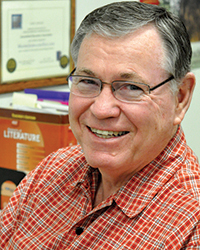
Gary Lindsay, MJE
Biography
Gary Lindsay is in his third year of semi-retirement after teaching language arts and journalism for 40 years at Kennedy High School in Cedar Rapids, Iowa. During this time, Lindsay grew the journalism program to compete at a national level, advising newspaper, yearbook, website, literary magazine, photojournalism, and online radio. Under his advising his students won numerous state and national awards. He served two terms as IHSPA President, and is the recipient of Iowa High School Press Association’s two highest awards. The Society for Professional Journalists at Iowa State University honored Lindsay with its Champion of the First Amendment Lifetime Achievement Award. This year he was recognized with NSPA’s Pioneer Award.
During his teaching career, Lindsay earned a MA In English Education and was a leader in curriculum development in Cedar Rapids, developing courses of study to meet a variety of standards and philosophies over four decades. In addition to curriculum development, Lindsay became a certified mentor under his district’s model mentoring program and served three years as a mentor for the district.
Lindsay’s post MA work was all in journalism education. This included a professional internship with the Cedar Rapids Gazette. He earned state journalism endorsement and JEA certification as CJE and MJE.
[slider title=”Read more from professional support director candidate Gary Lindsay” group=”accordion-15″]
Lindsay’s service to JEA includes:
- State Director for Iowa.
- Three terms as North Central Regional Director.
- Member of the first National Journalism Professional Learning Community.
- JEA Mentor for Iowa.
- 21st Century Skills Committee Chair.
- As a Regional Director, Lindsay has been a voting member of the JEA Board.
In retirement, Lindsay works as a JEA Mentor, monitors several educational blogs as P21 subcommittee chair, and does journalism consulting work. His mentoring and consulting work is supported with his JournalismGuy’s Update website (http://journalismguy.wordpress.com). His hobbies include photography, fly fishing, wilderness canoeing, and singing with his church choirs and the Harmony Hawks, the local affiliate of the Barbershop Harmony Society. He is VP for Marketing and PR for the Harmony Hawks and webmaster (http://www.harmonyhawks.org).
What do you believe is the biggest issue facing scholastic journalism and what would you do as a board member to address it?
I can’t name just one; I see these are the big issues:
- Continued vigilance to protect scholastic press rights.
- Resisting and counteracting the pressures to contract curriculum caused by high stakes testing and CCSS.
- Finding ways to embrace Career and Technical Education while preventing the pigeonholing of journalism only as CTE rather than something basic to every citizen’s education.
- Retaining young journalism educators, by providing them training to meet journalism’s diverse needs and by offering them support through mentoring.
If elected as Professional Support Director I plan to develop a website linked to JEA.org similar to what JEA Digital Media and JEA Scholastic Rights Commission currently have. As director I would form a committee whose goal it would be to monitor developments in Common Core, 21st Century Skills, CTE and other national educational initiatives, provide information about these to members and answer members concerns.
As a board member what would you do to address the needs of multiculturalism in journalism educators?
Advocating for the needs of multiculturalism is a core value of JEA: I have supported that with my votes as a board member and will continue to do so. The Multicultural Commission and the Mentoring Committee are currently looking for ways to combine efforts to provide better follow-up for the advisers brought to the Outreach Academy. I will support these efforts as a board member and as Professional Support Director.
As a board member what would you do to address scholastic press rights?
Advocating for student press rights is a core value of JEA, and the fight to expand and preserve student press rights (and teachers’ associated rights) is something I have personally been dedicated to in my advising career. I have fought this fight in my own school and in our state legislative process. As a board member I have and will continue to support our Scholastic Press Rights Committee. I will also continue to call for education about scholastic press rights to be part of all JEA curriculum and certification materials. As a JEA Board member I have voted, as far as our budgets allowed, to provide financial support to the Student Press Law Center to help fund the great work they do. I will continue that support and work to explore new partnerships with the First Amendment Center.
As a board member what would you do to promote the needs of journalism educators in middle school and junior high schools?
Right now, only a small number of JEA members teach and advise in middle and junior high schools. We need to do more to support them with appropriate curriculum materials, and that is something that JEA is now addressing through the Curriculum Project. At our conventions we need to thoughtfully expand our program offerings and contests for younger student journalists. While continuing to support these efforts, JEA needs to do more. We need to offer curriculum that infuses media literacy, civics and journalism into middle and junior high school curriculum.
As early as fourth grade, the Common Core State Standards address students’ ability to read and write informational texts, to gather information from a variety of sources, to use produce and distribute their writing using various technologies. Many states have included 21st Century Skills in these standards, including, civic literacy, employability skills, financial literacy, health literacy and technological literacy. Clearly, these skills are at the heart of journalism and as Professional Support Director my focus will be finding ways to infuse these skills K-12 not just in high schools. In addition to addressing these in instruction, JEA needs to advocate for production opportunities for young students, and offer support for their teachers to make this possible.[/slider]
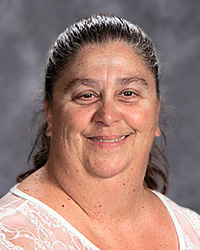
Anita Marie Wertz, MJE
Biography
I began teaching 31 years ago. I taught Spanish and English at the high school level for eight years, before transferring to middle school where I taught yearbook for 14 years and newspaper for 12 years. In 2005, I transferred to Cesar Chavez High School to start the yearbook program (The Myth) at the new high school. In 2008, I took over as adviser of the newspaper program, beginning an on-line presence for The Oracle. In 2011 The Oracle moved fully on-line and The Muse (magazine) was added to the school publications the same year. In 2012, I started a program called Operation Titan, to send care packages and letters to the school’s military alumni. In March 2013, I passed the Adobe certification test for Visual Communication: Photoshop. In December 2013, I began the Adobe certification program for publication students and the Communication Technology Small Learning Community at CCHS.
What do you believe is the biggest issue facing scholastic journalism, and what would you do as a board member to address it?
I think one of the biggest issues facing scholastic journalism is the continual educational changes and focuses. It becomes more and more important for teachers of scholastic journalism to show how the subjects and lessons taught in journalism classes/programs support the core subjects and are a foundation for college and can be used in any career.
[slider title=”Read more from professional support director candidate Anita Marie Wertz” group=”accordion-16″]
As a board member, what would you do to address the needs of multiculturalism among scholastic journalism educators?
It is important to remember and realize that our students come from many different backgrounds. It is up to the journalism teacher to create a “culture” of trust, freedom and responsibility in class.
As a board member, what would you do to address the needs of scholastic press rights?
I think it is important as teachers that we make sure our students know they have a voice, a very important and strong voice. These young people are “citizens in training.”
As a board member, what would you do to promote the needs of journalism educators in middle schools and junior high schools?
As a board member I will continue the Aspiring Young Journalist Award, recognizing top middle school journalists at a national level. Also, I will propose a Junior High/Middle School National Media Contest so junior high/middle school students can submit their work for evaluation and awards.[/slider]
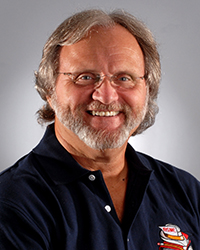
John Bowen, MJE
Biography
John Bowen teaches journalism at Kent State University after 30-plus years teaching journalism and social studies on the high school level. He has been instrumental in developing Kent State’s online master’s degree for journalism educators and also teaches or has taught Media Ethics live and online, Social Role and Responsibility online and media law online in addition to live courses in Newswriting, Information Gathering and Multimedia Storytelling.
His awards and recognition include Dow Jones News Fund High School Journalism Teacher of the Year, JEA’s Carl Towley and Medal of Merit Awards, Pioneer Award from NSPA and Gold Key Award and Charles R. O’Malley Award for Excellence in Teaching from CSPA. He is a JEA’s current Scholastic Press Rights Commission chair. He is also co-author of a law column in Dow Jones News Fund’s “Adviser Update” and webmaster of JEA’s Press Rights Commission website, http://jeasprc.org.
What do you believe is the biggest issue facing scholastic journalism, and what would you do as a board member to address it?
As we prepare to overhaul our journalism education programs to make them more multiplatform friendly and adaptable for future changes, journalism educators and advisers must also not lose sight of basic journalism standards:
[slider title=”Read more from scholastic press rights director candidate John Bowen” group=”accordion-17″]
- In all areas of journalism, we practice and believe in freedom of expression for our students, their school and communities as the cornerstone of democracy. Even if, as advisers, we cannot complete our mission in a way that practices these standards, we must still uphold those freedoms and endorse their application.
- In all areas of journalism, we promote ethical fitness for ourselves and our students so our communities see and understand our professional standards.
- In all areas of journalism, we do everything in our power to empower student responsibility to journalistic principles of truth, accuracy, verification, thoroughness and coherence through their reporting.
- In all areas of journalism, we provide a trusting and caring learning environment for our students, no matter what new platforms, software, equipment or teaching philosophies develop.
- In all areas of journalism, we must continue to provide support for the continued health and prosperity of the Student Press Law Center.
As a board member what would you do to address the needs of multiculturalism among scholastic journalism educators?
- As a board member I would work to ensure all prospective journalism educators receive equal opportunities, live and online, and have the ability to:
- Participate in educational activities for professional development that aid their students’ learning.
- Obtain educational materials for themselves and their programs from national regional, state or local means that include mentoring, certification, online educational advancement and curriculum.
- Receive opportunities for financial assistance from JEA and other funding groups to enhance their teaching skills and journalism programs.
As a board member, what would you to do to address the needs of scholastic press rights?
I would continue and increase the efforts of JEA’s Scholastic Press Rights commission as it, through live contact or outreach online:
- Develops position statements and guidelines for student free expression and educators’ ability to make that possible.
- Continues its outreach to teachers, students, administrators and communities to protect and enhance student press freedoms and journalistic responsibilities.
- Expands knowledge of the importance of free and journalistically responsible student media through the development of educational teaching materials and learning materials, including strengthened news literacy programs.
- Supports those individuals and groups who empower student decision-making through free expression and responsibility.
- Listens to the needs and wants of journalism educators, students and their communities, no matter the platform used.
- Promotes the continued growth of legal and ethical values in journalism no matter the platform or future application.
As a board member, what would you do to promote the needs of journalism educators in middle schools and junior high schools?
All aspects of journalism education are important, be they at the middle school, junior high, high school or collegiate levels. JEA should continue to develop curriculum, legal and ethical guidelines and learning activities for all levels, and to support other national, regional state and local journalism groups who do the same. Strong middle school and junior high programs develop strong high school and eventually collegiate programs. Middle school and junior high understanding and application of free expression assures the country that the practical belief in free expression is understood and practiced.[/slider]
